It’s easy to forget that not all that long ago, the suit as we know it today was viewed as casualwear. When the frock coat, which was the uniform of 18th century gentleman, fell out of favour thanks to the French revolution and the sartorial smarts of one Beau Brummell, tailors first created the morning suit, then eventually ditched the tails of the jacket, cutting it much shorter to the hips and designed to be worn with trousers cut from the very same cloth.
One would never wear it for smart occasions, or even in the relaxed company of friends. It was attire to wear in the field or while on sporting duty if you were of the upper class, while commoners saw the suit as a sartorial leg-up from their usual peasant clobber. It’s only a relatively recent phenomenon that we have come to associate the suit with business, a relationship made all the stronger by Hollywood. You can understand why – because almost everyone looks great in a good suit.
Nevertheless, we’d be missing a trick if we forgot about the suit’s casual origins. It’s a history that brands from Dior to Louis Vuitton have not failed to reference in recent collections, recalibrating the suit’s casual cachet and stylishly rubbishing this notion that the suit’s boundaries are shaped by the office.
Modern tailoring can be perfectly casual, supremely comfortable and very stylish, with a broad and diverse number of options to choose from. Here are eight you should consider.
The Cotton Chino Suit
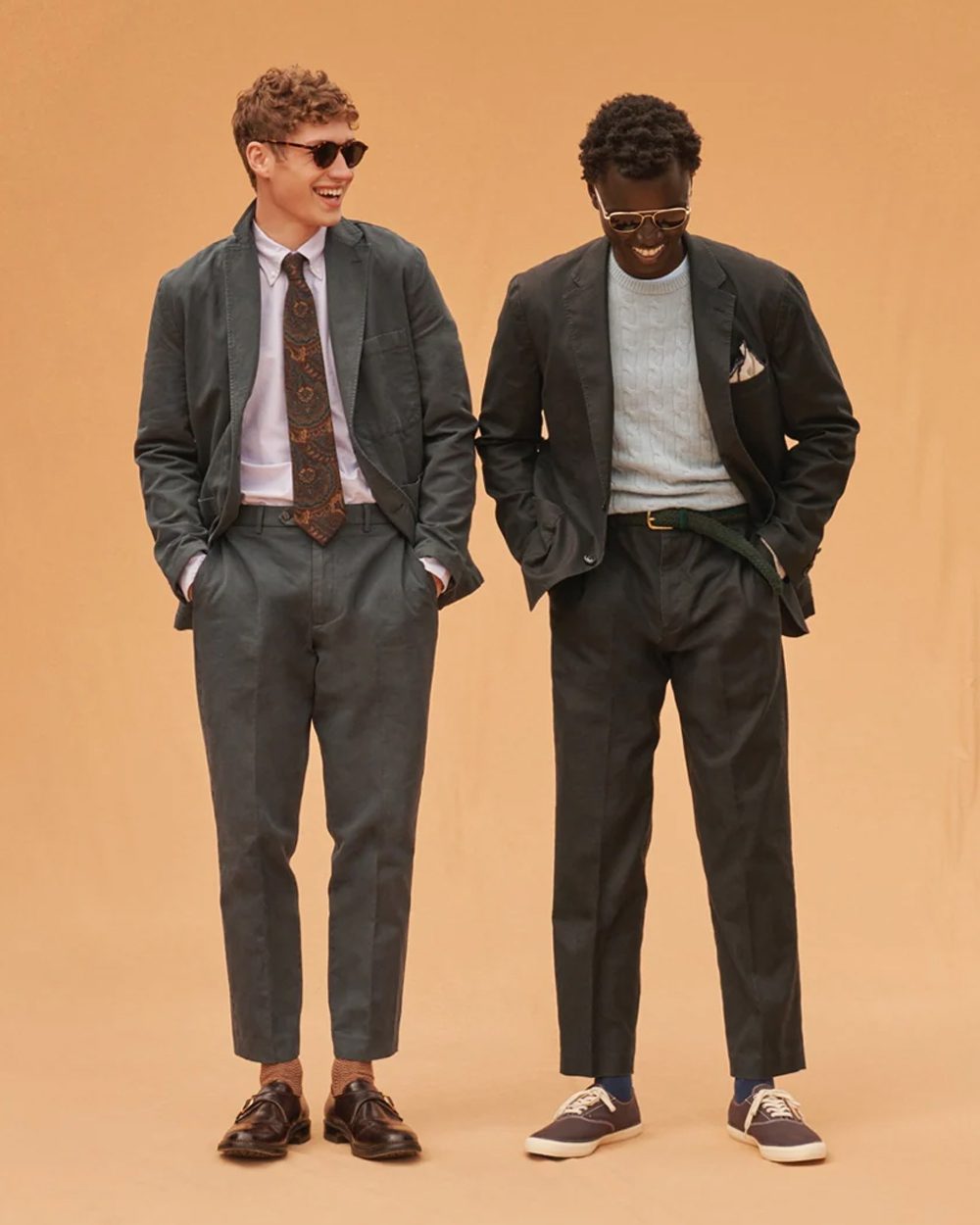
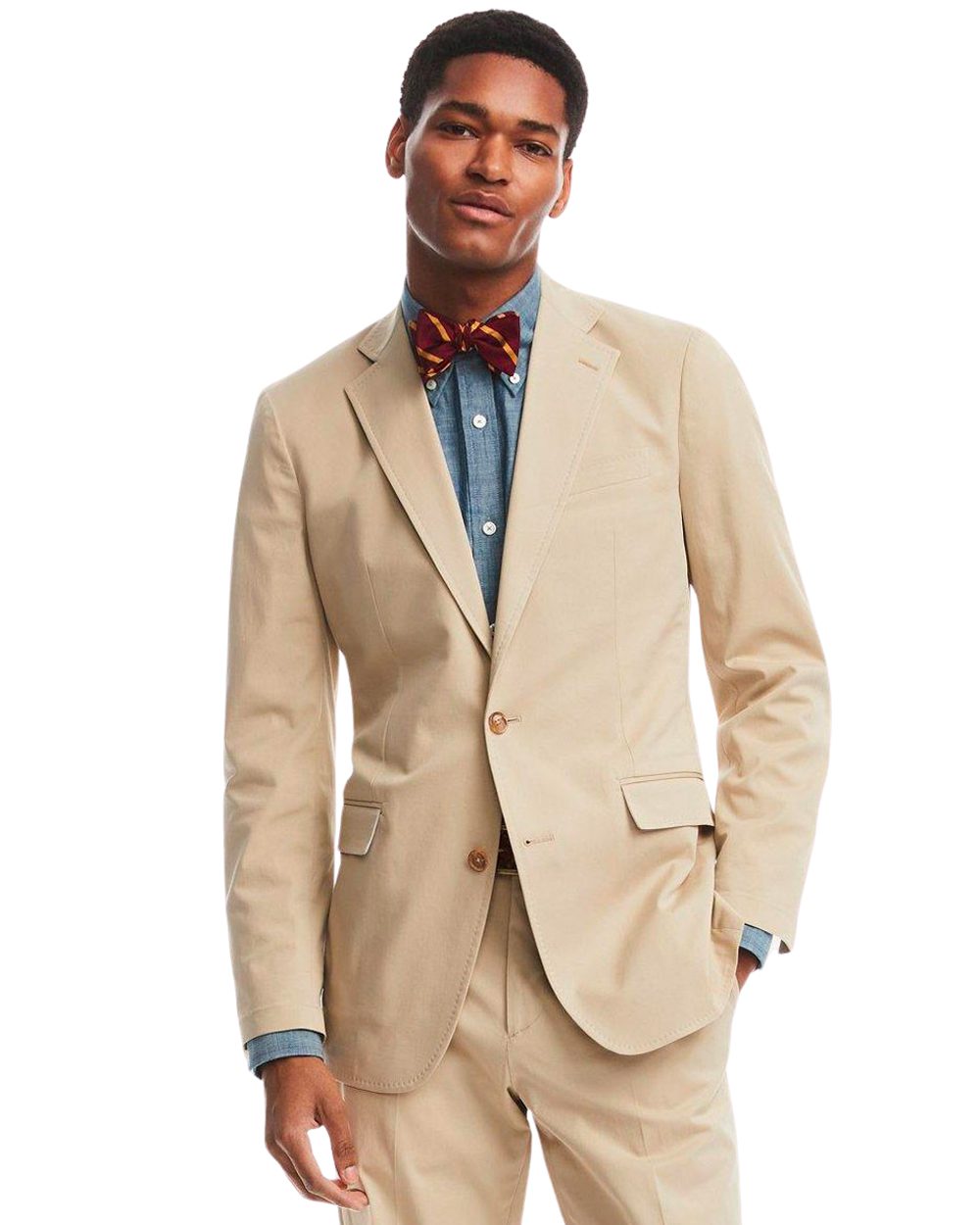
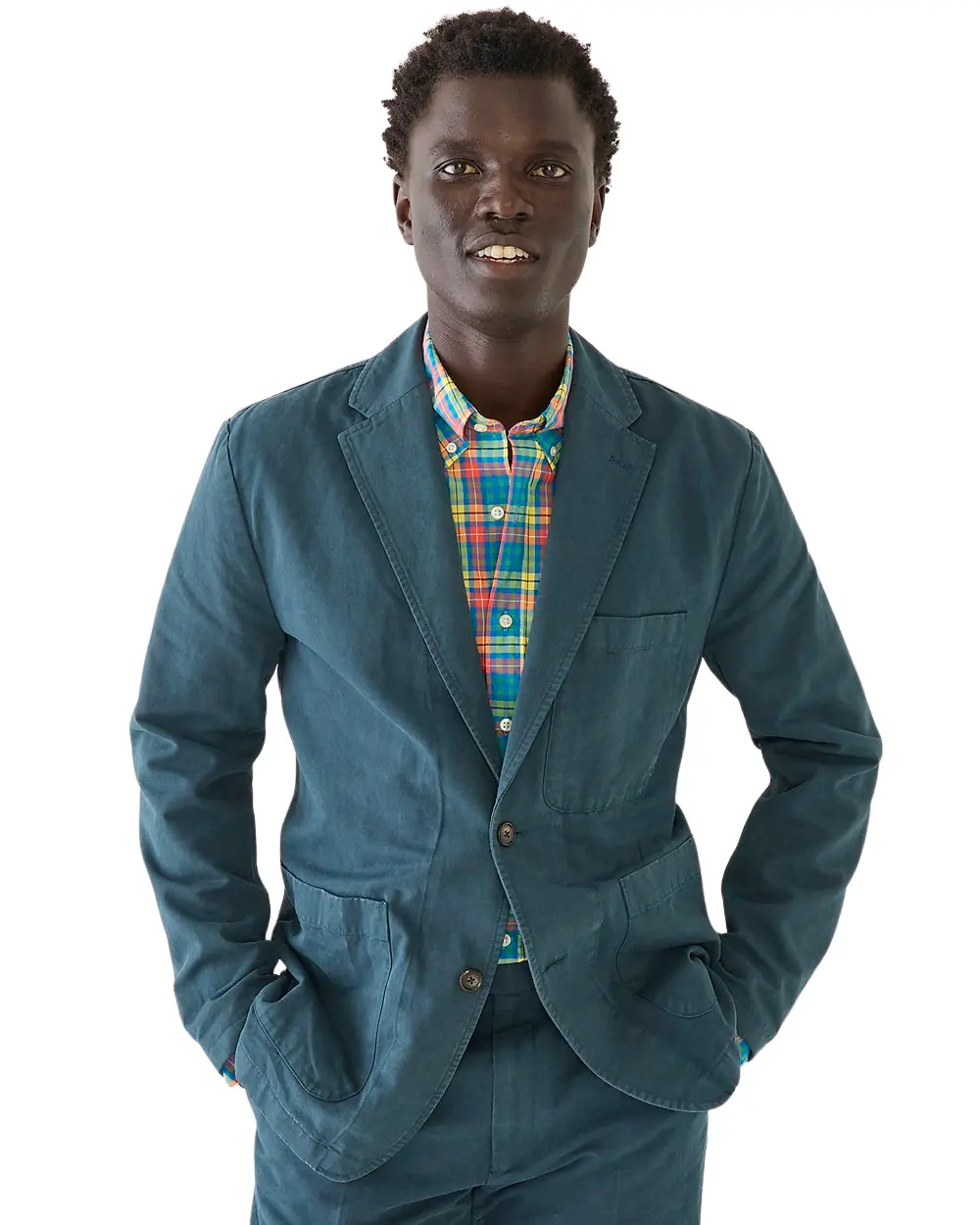
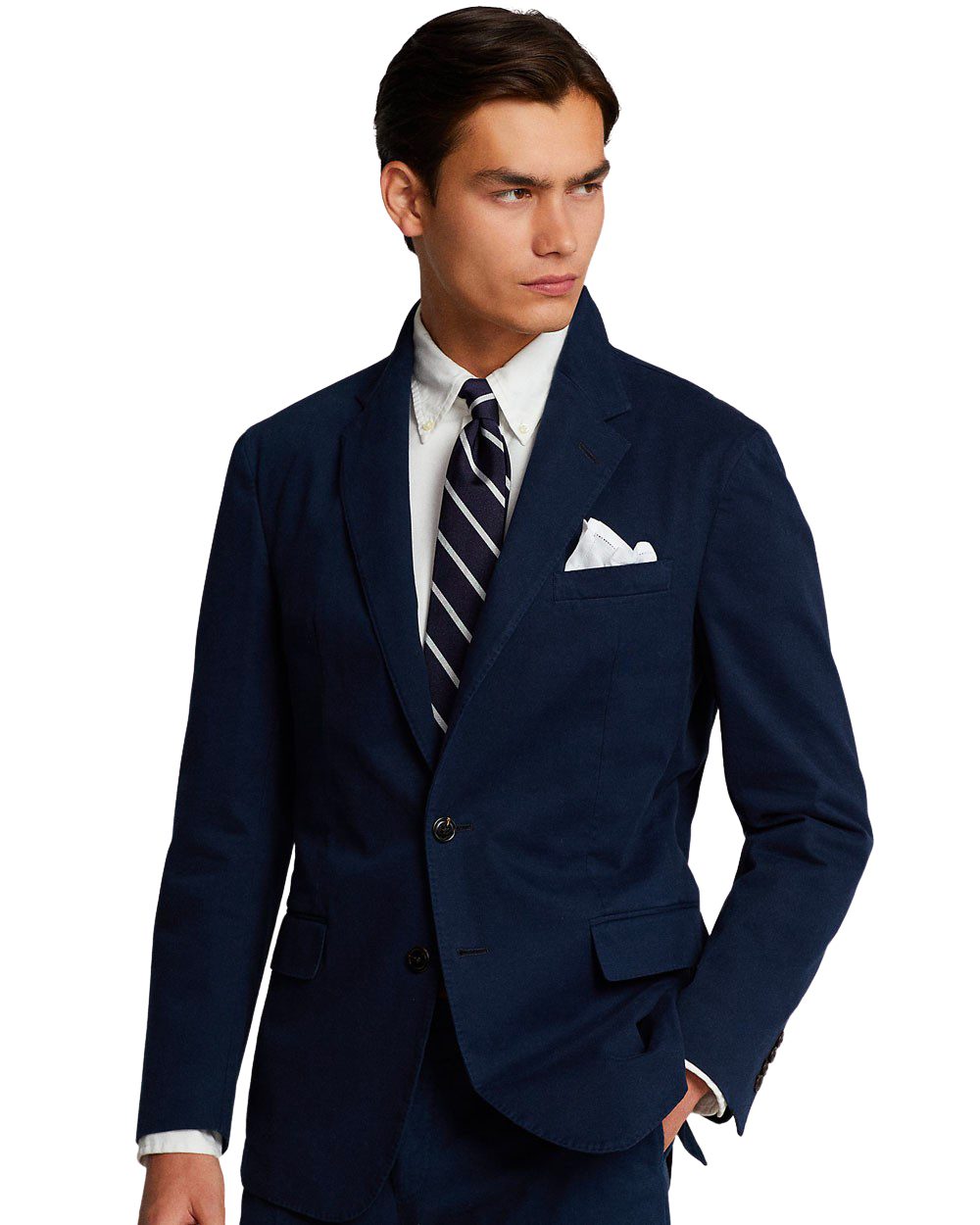
Cotton chinos are the very epitome of smart casual attire, so it’s a wonder that the chino suit isn’t more popular. That said, we see more and more brands producing summer versions these days, responding to the general relaxation of modern wardrobes.
Typically cut from a midweight chino cloth, which tends to be very hardwearing, the chino suit has a crisp dry handle to it. And while it will never have the soft drape of wool, it does make for a very versatile suit when cut well. The emphasis is on ‘cut well because an oversize chino suit will not sit well on your frame.
We’d advise sticking to khaki, tan and beige styles to keep the look casual and slightly rugged, wearing it with everything from a shirt and tie to a tee or short-sleeved shirt. Your shoes should be as you would wear with chino trousers: suede desert boots, leather boat shoes and lo-fi white sneakers are all great options.
The Pastel Suit
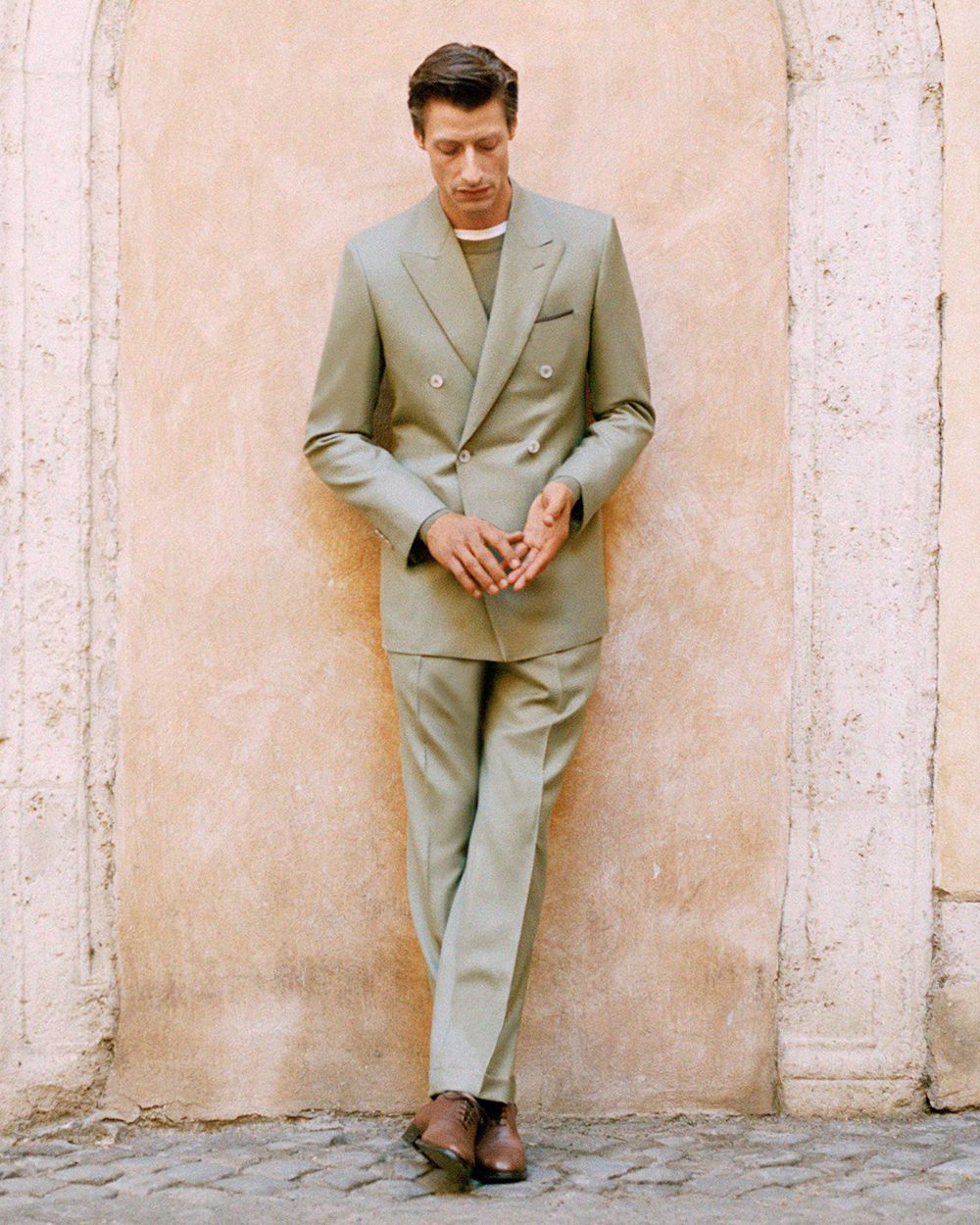
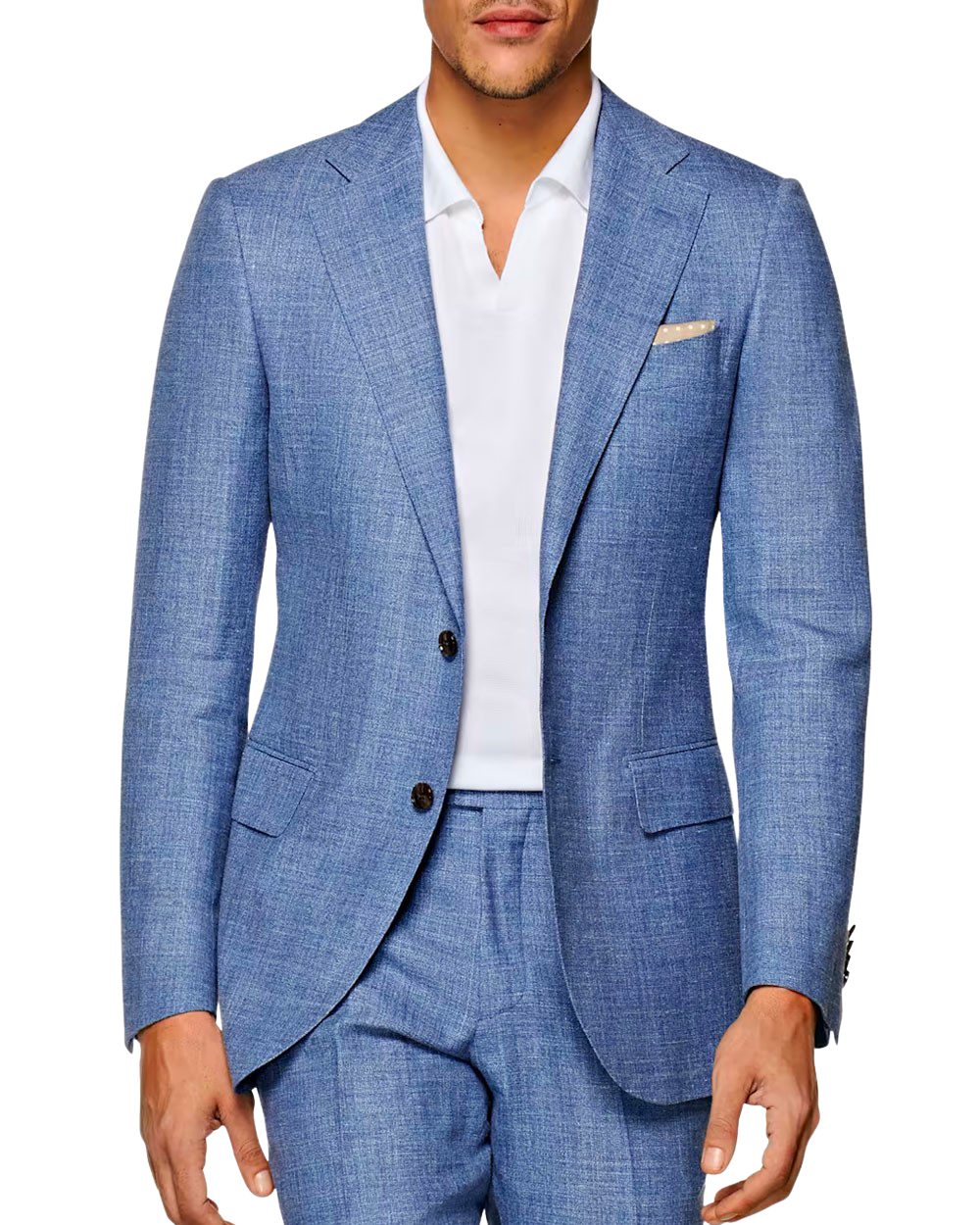
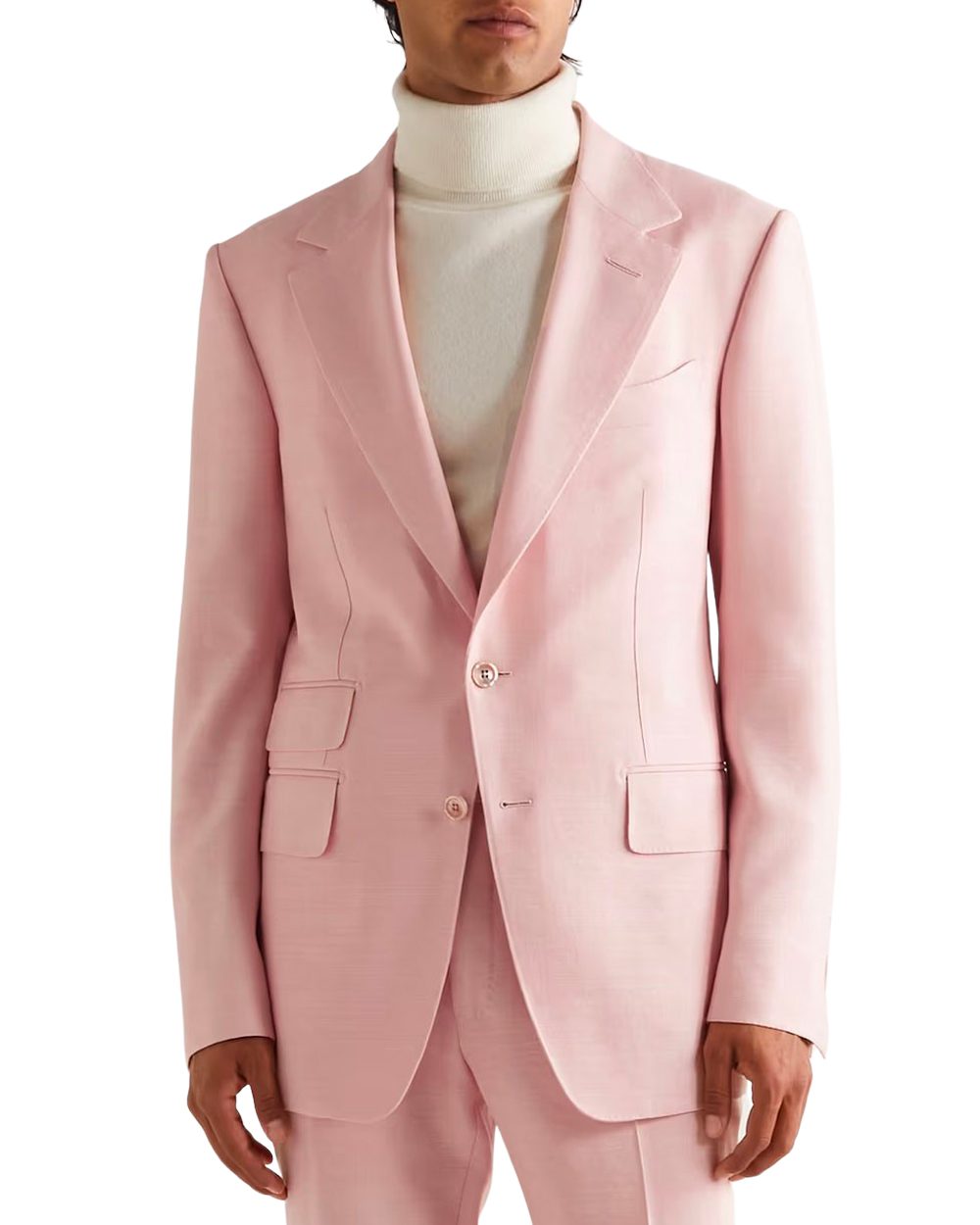
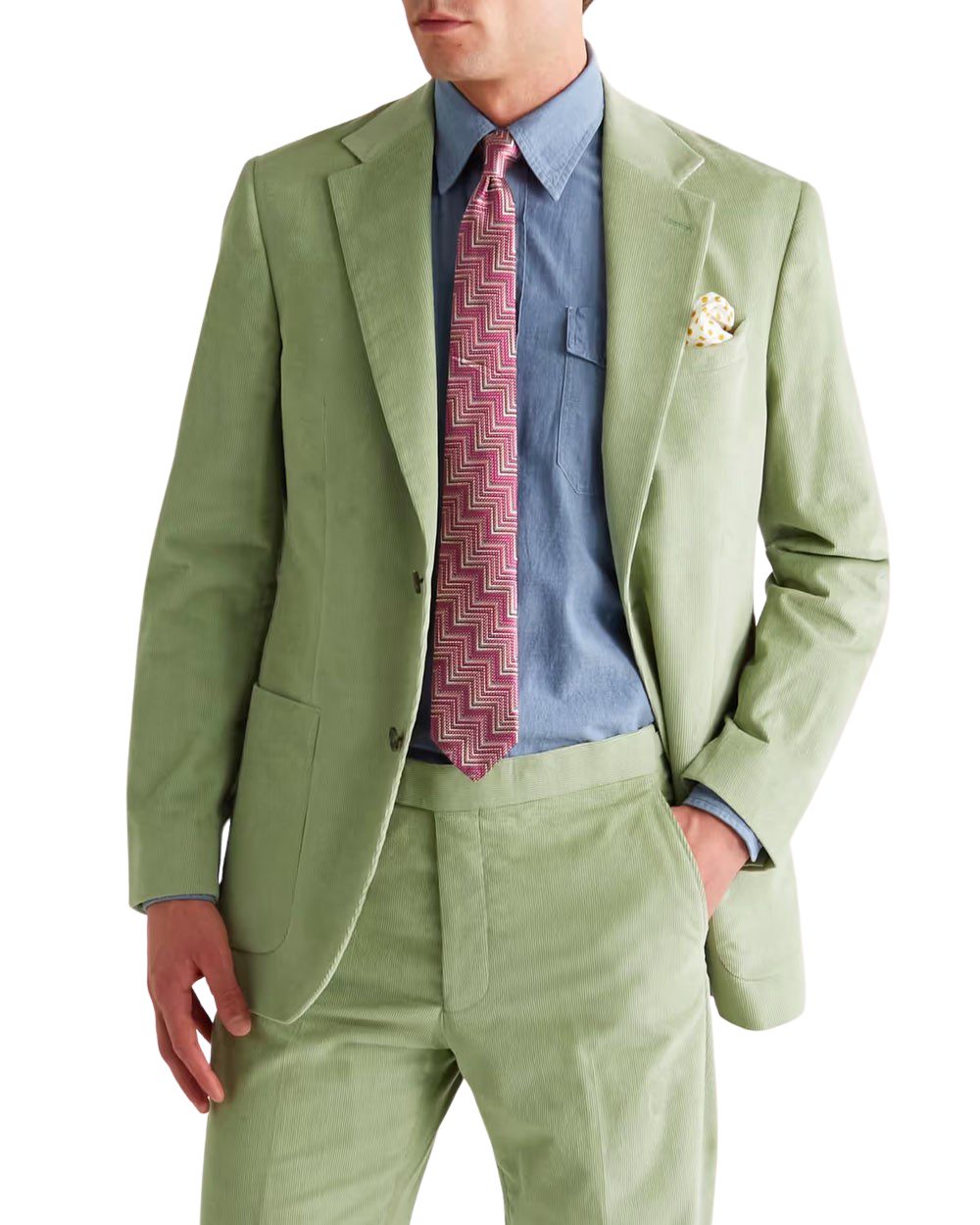
Pastel shades are made for the summer. Sky blue, dusty pink, ivory, pistachio green… they’re all excellent tones to incorporate into your wardrobe, but especially your tailoring. These sorts of colours were traditionally reserved for summer weddings but today pastels are a lot more versatile and it’s quite acceptable to wear them to the office.
The tones are best rendered in linen or a cotton and linen blend – the slubby textural finish of linen brings out the best of pastels, creating a subtle dusty marbled effect, whereas on pure cotton the tones can look a little flat and one dimensional.
The Unstructured Linen Suit
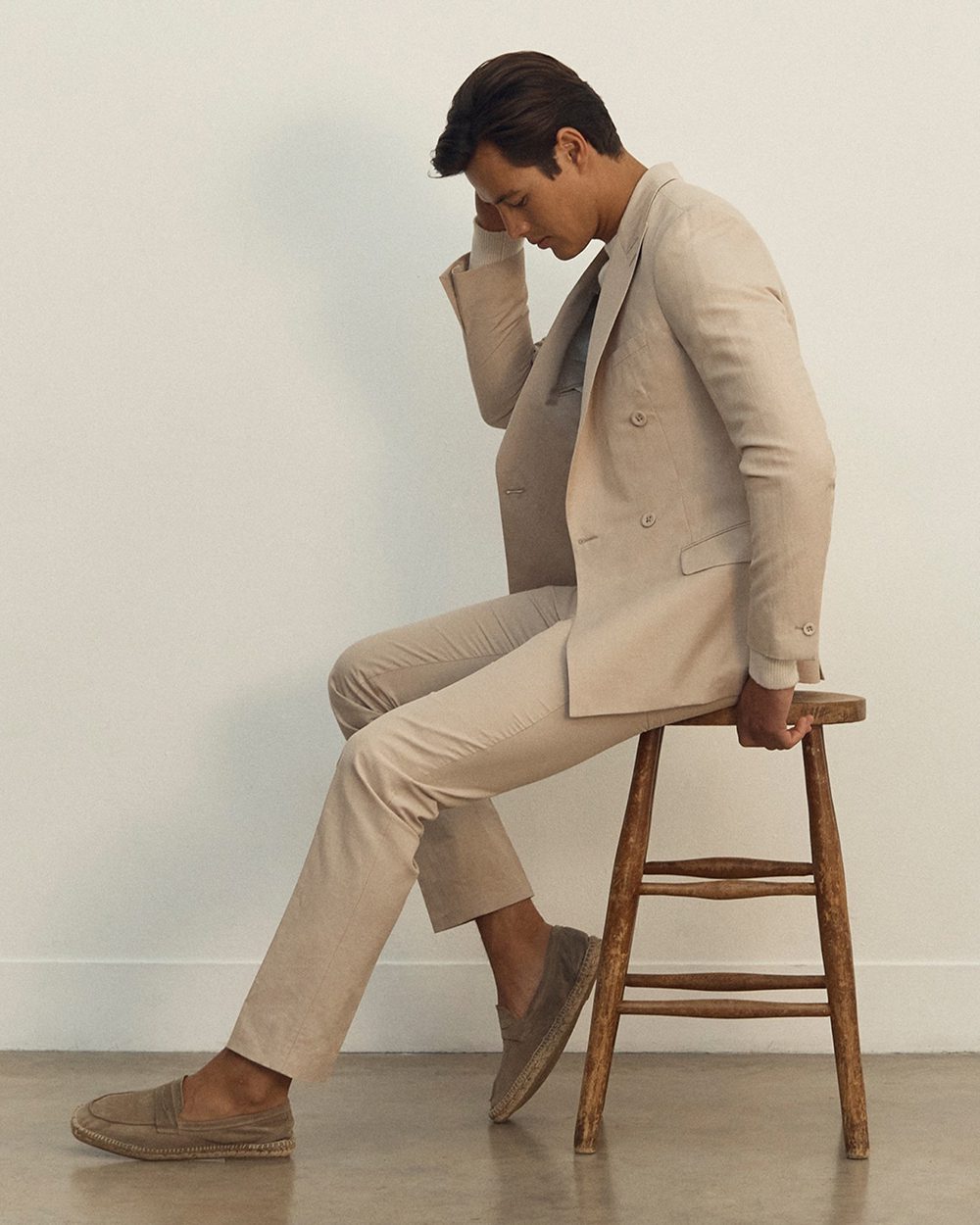
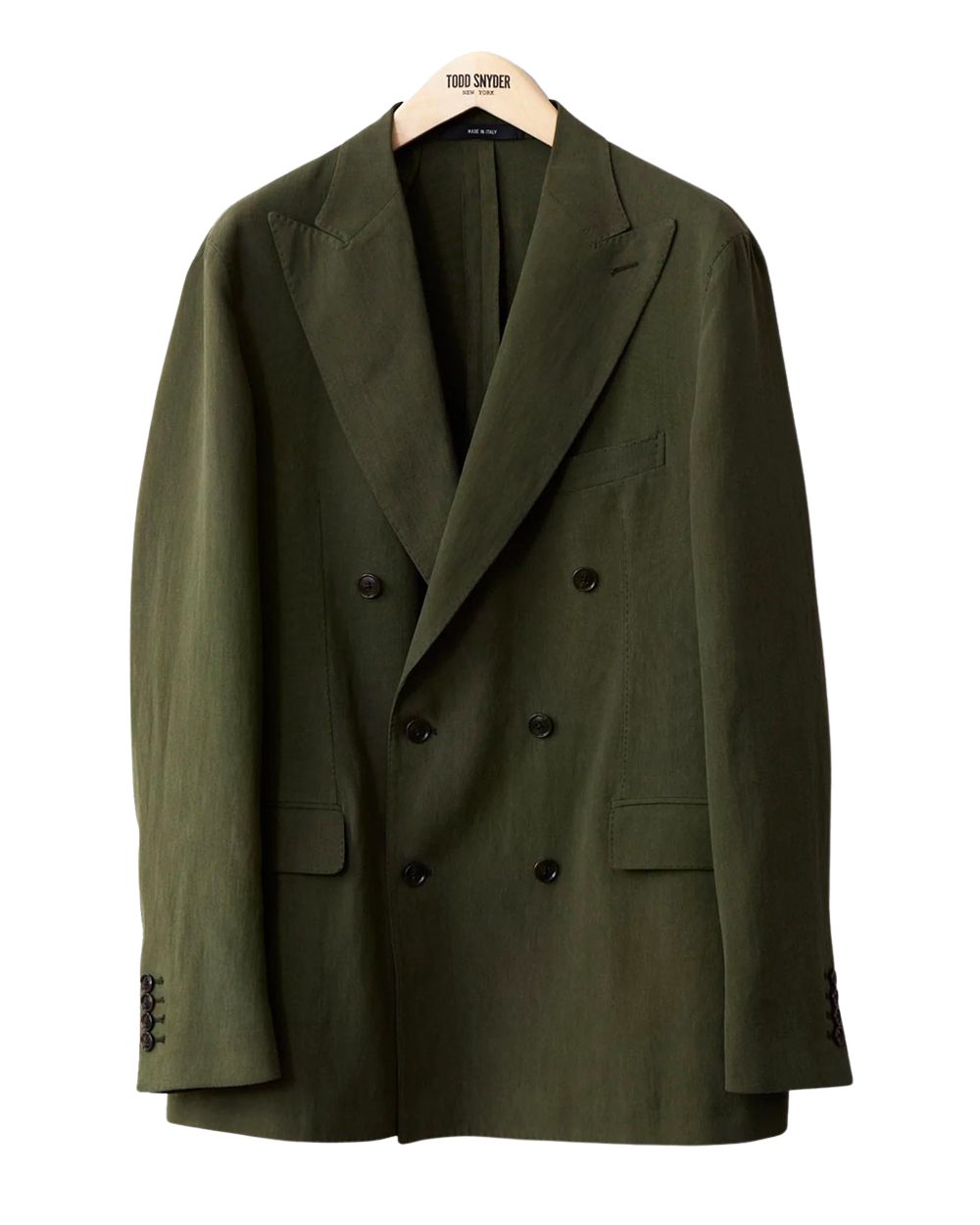
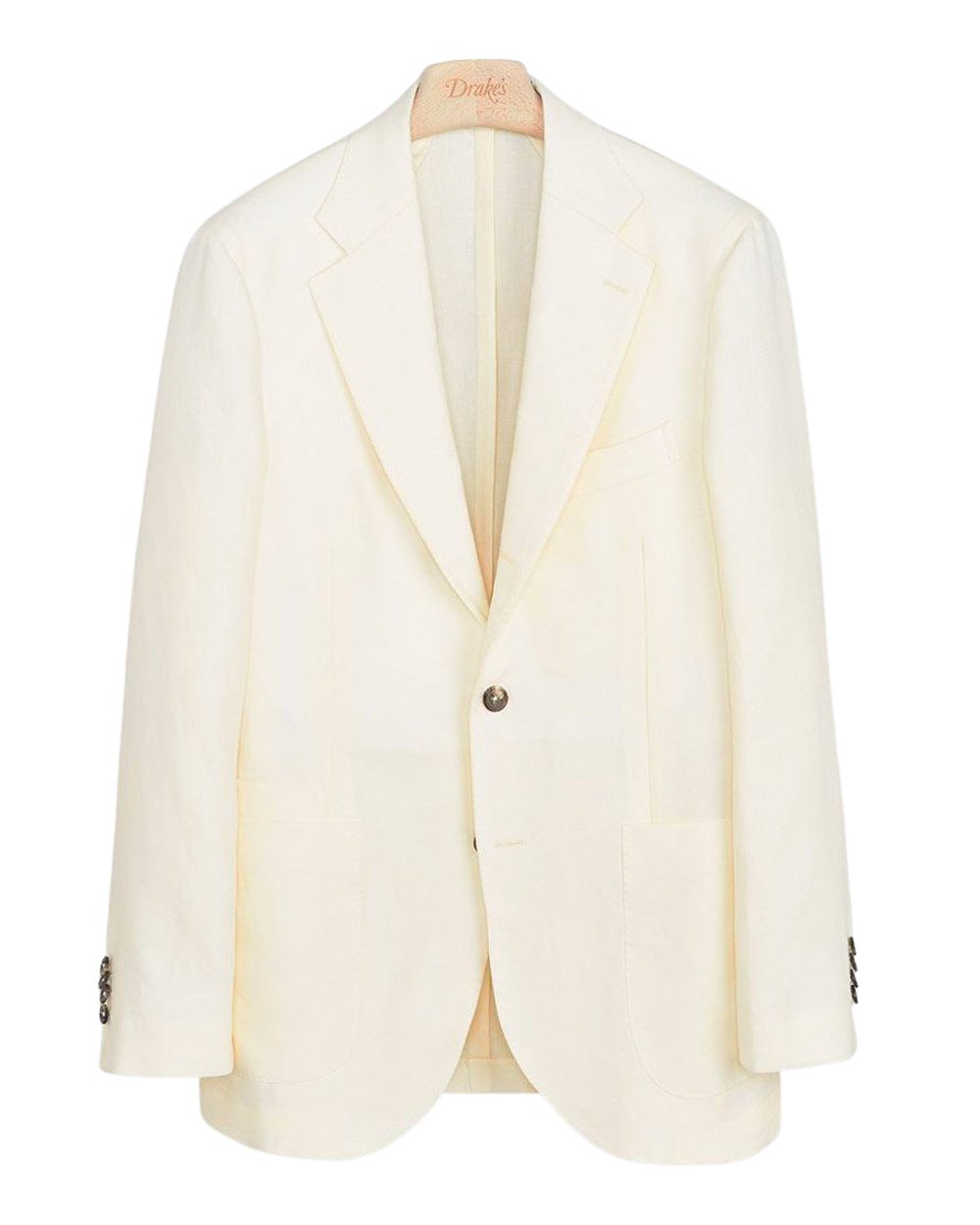
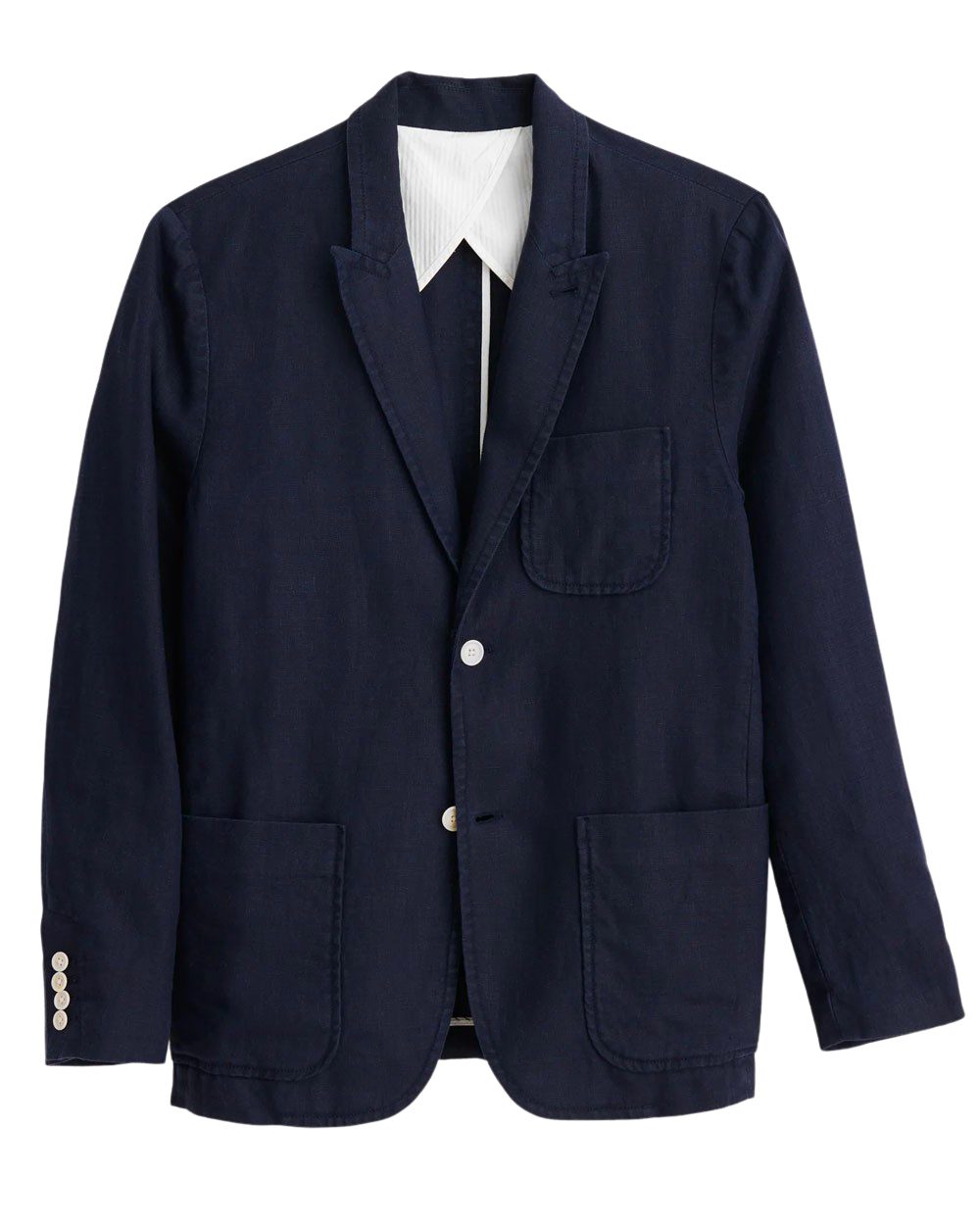
A brilliant fabric option for the summer months, linen is derived from the flax plant and is the most sustainable of the natural fibres given that the crops are naturally irrigated from rain water. The result is a soft, lightweight textural cloth with a drape that only gets better with age.
It’s for this reason that you’re better off applying it to a ‘sack’ jacket silhouette, otherwise known as an unstructured jacket. Without additional padding, canvassing or lining, the linen sits naturally on the torso.
Natural tones such as beige, off-white and white are great versatile options, but autumnal tones work especially well too: think tobacco, tan, forest green and olive. Linen works well in both single- and double-breasted silhouettes, taking a touch of the formality out of the latter.
The Short Suit
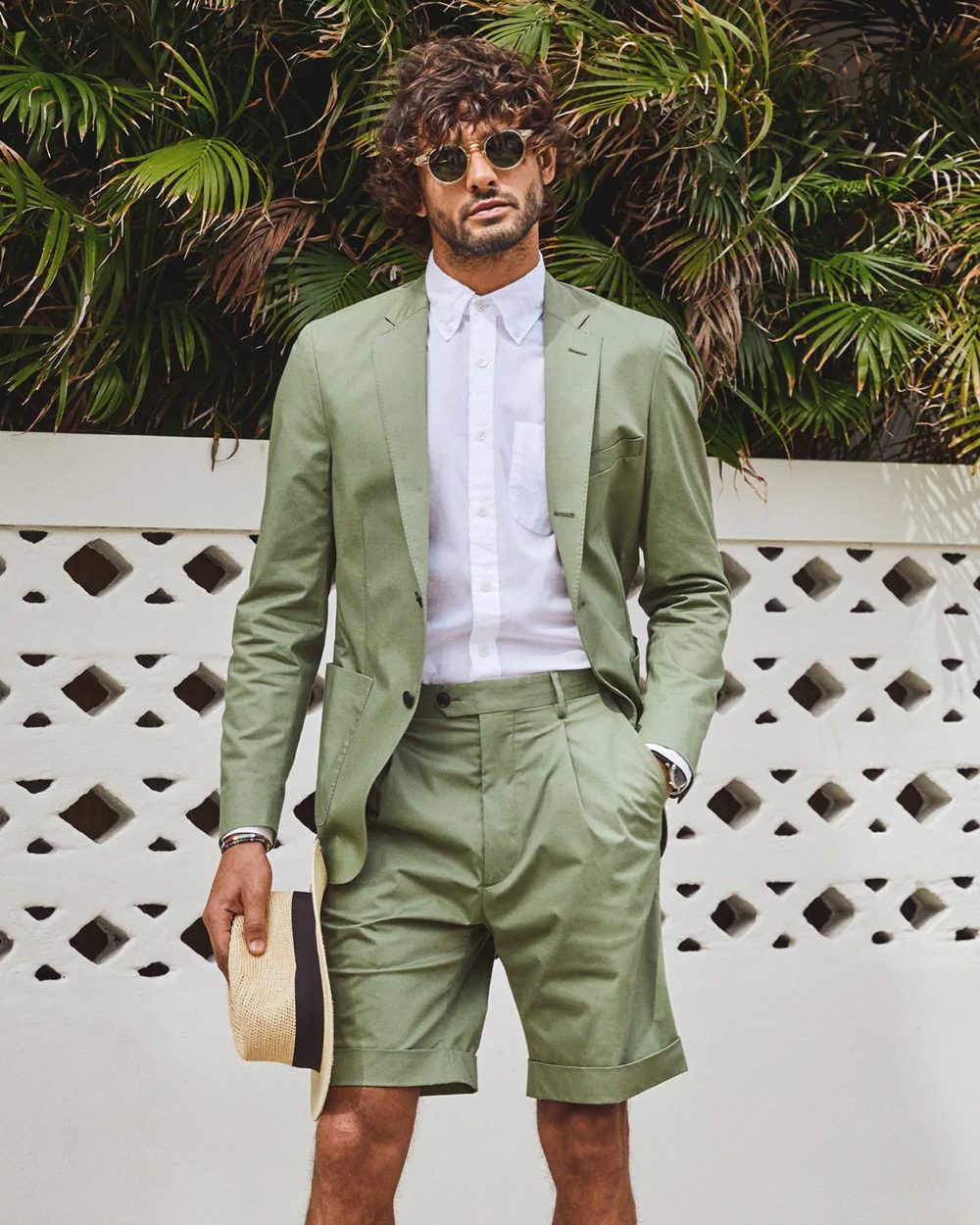
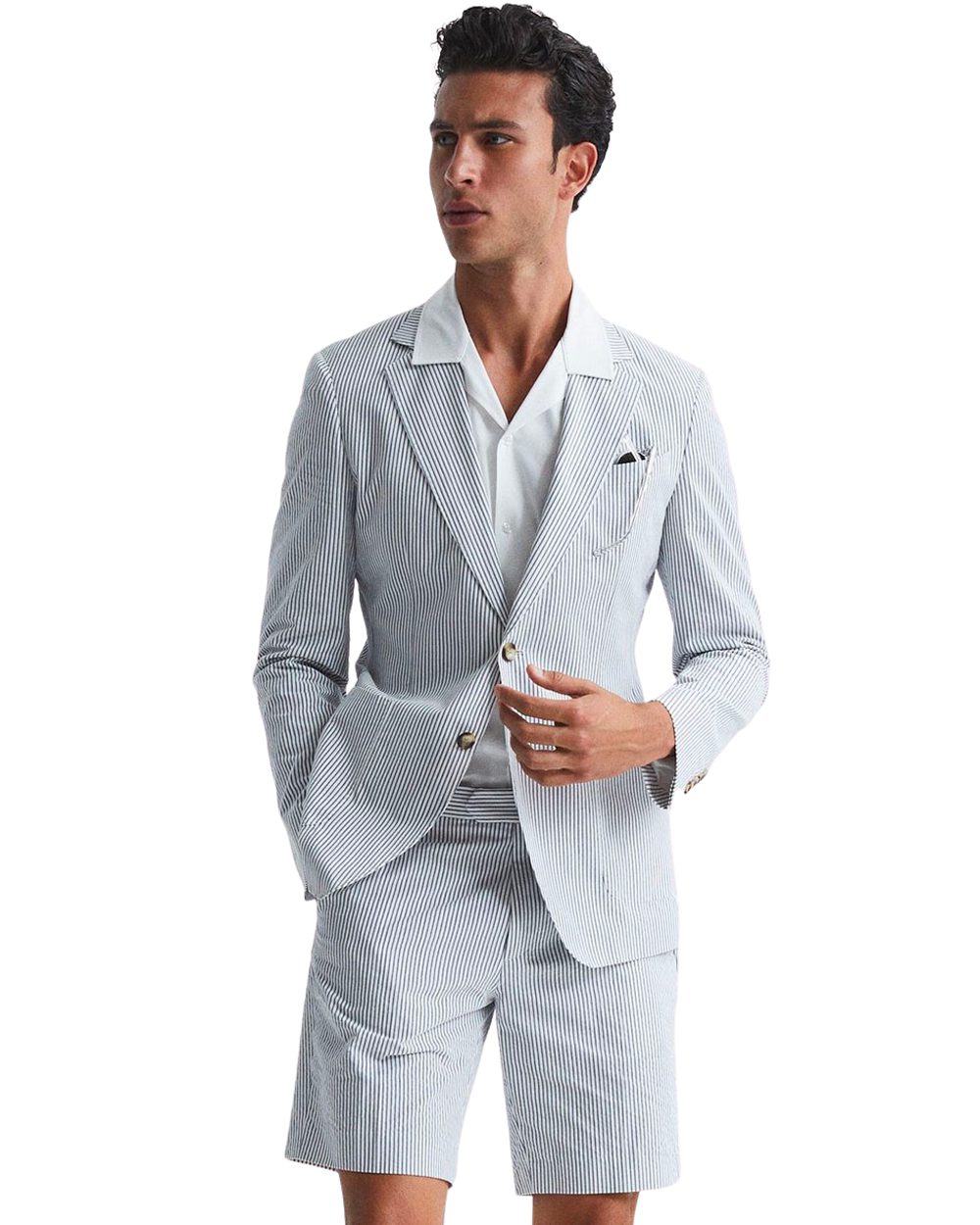
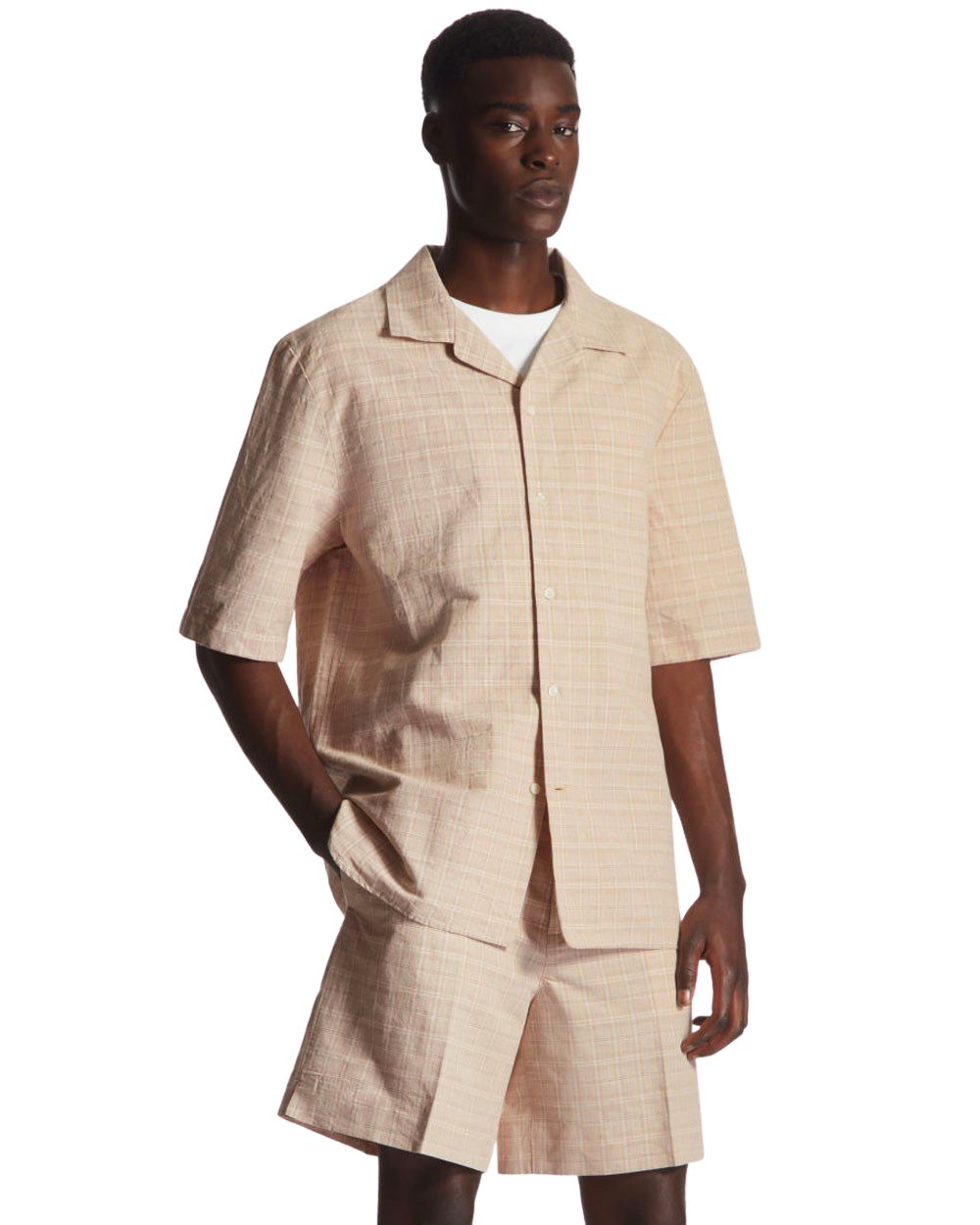
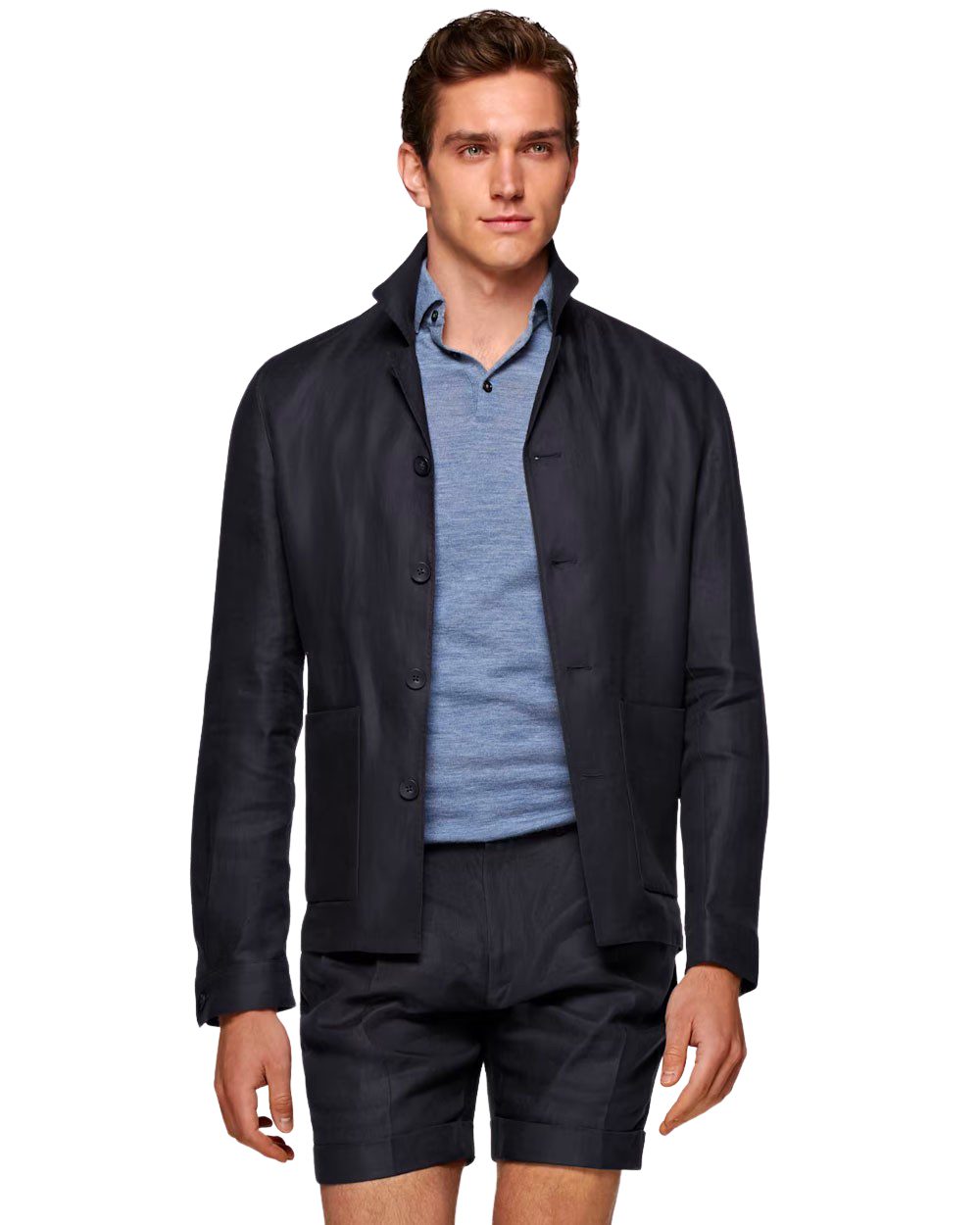
Always a contentious choice, the short suit is undeniably back on the seasonal runways and it really shouldn’t be a surprise given how society on the whole has shifted to a more casual aesthetic over the past few decades. The purpose of the suit is being redefined itself, losing the ‘uniform’ identity to exist in a more stylish, fashion role.
Getting the look right almost entirely depends on the shorts element. Make no mistake, this is not the territory for fitted jackets and short shorts. Quite the opposite actually. Think loose (even oversized) unstructured jackets complemented with similarly voluminous shorts that have more in common with a basketball short silhouette than they do a tailoring one.
The Printed/Patterned Suit
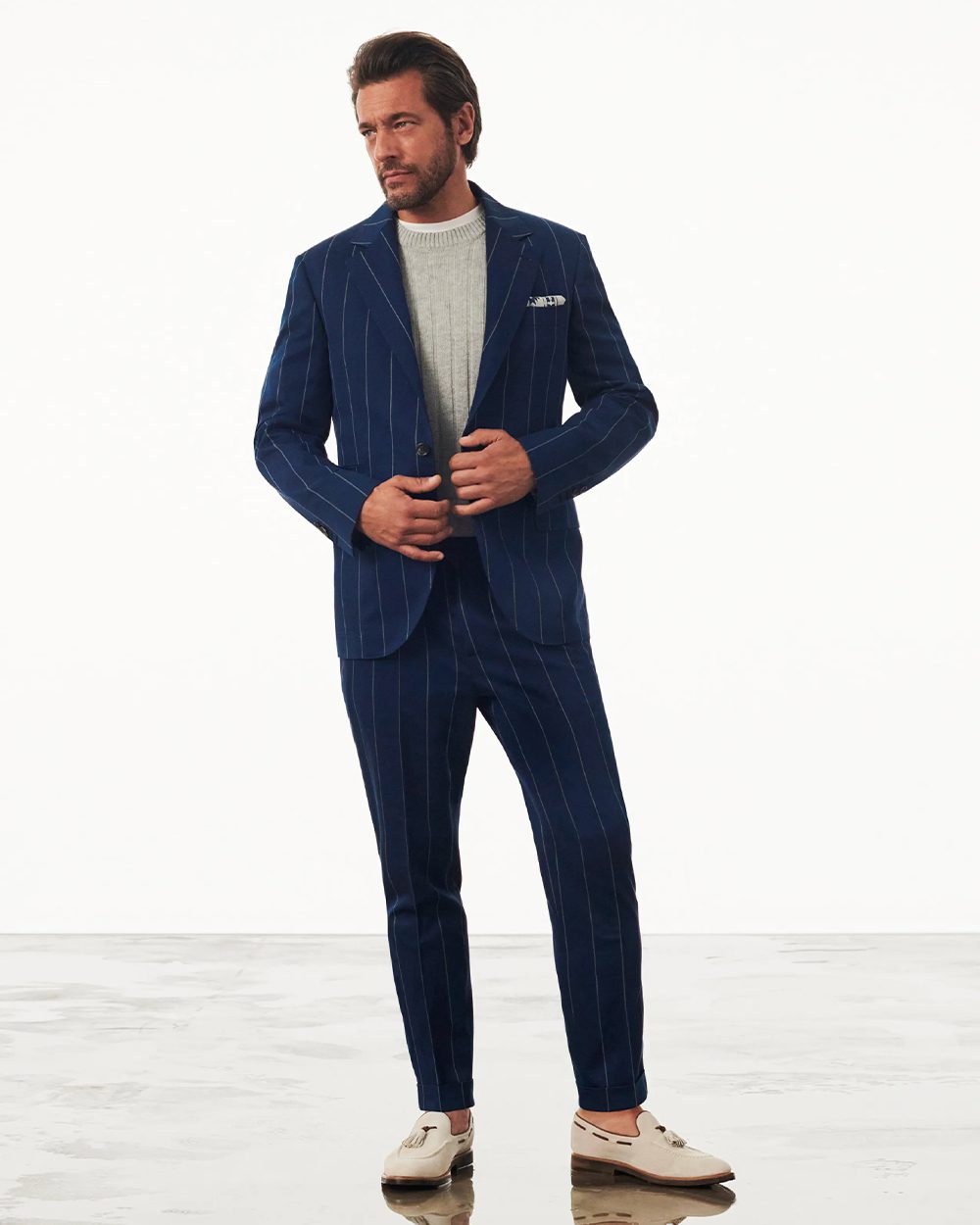

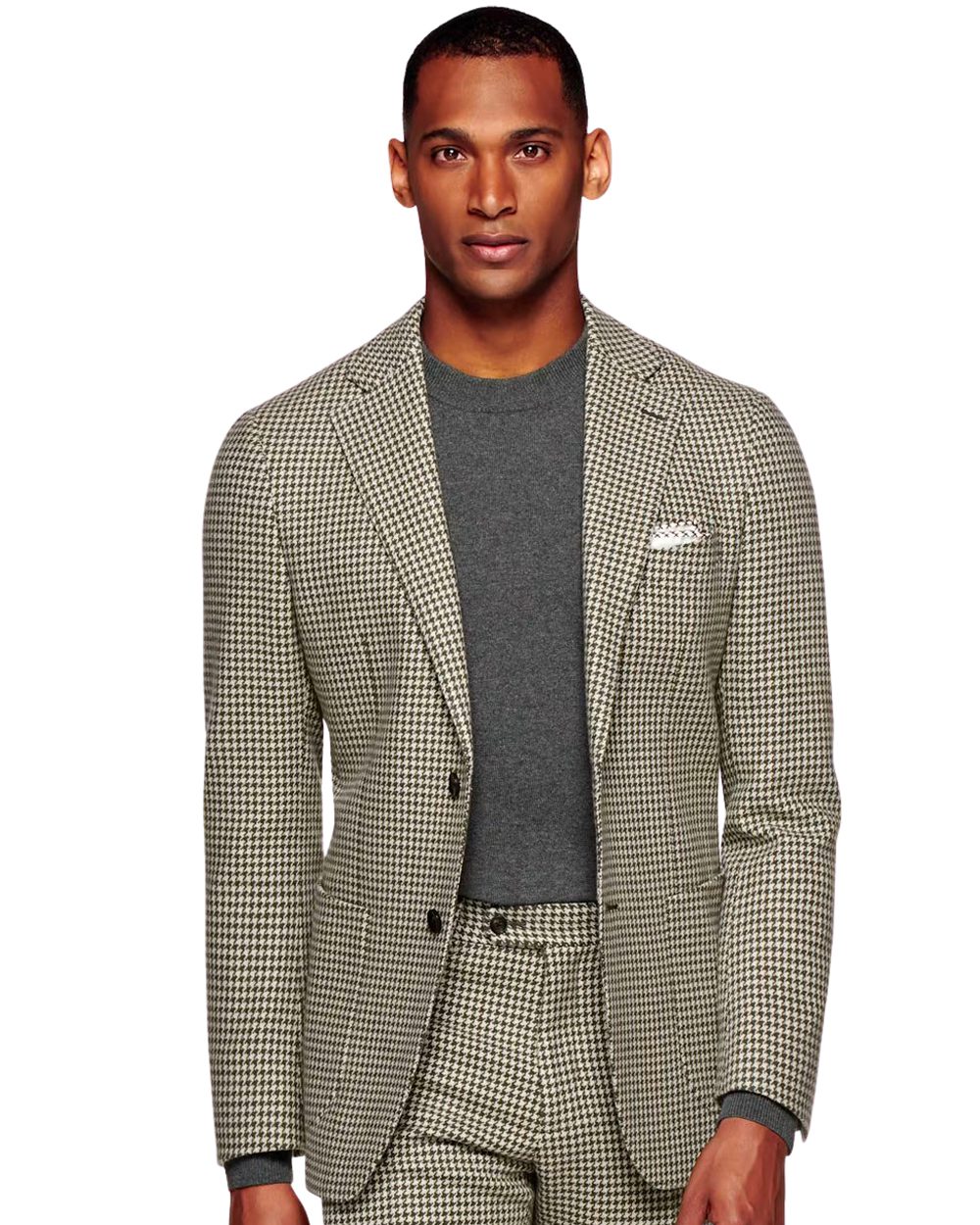
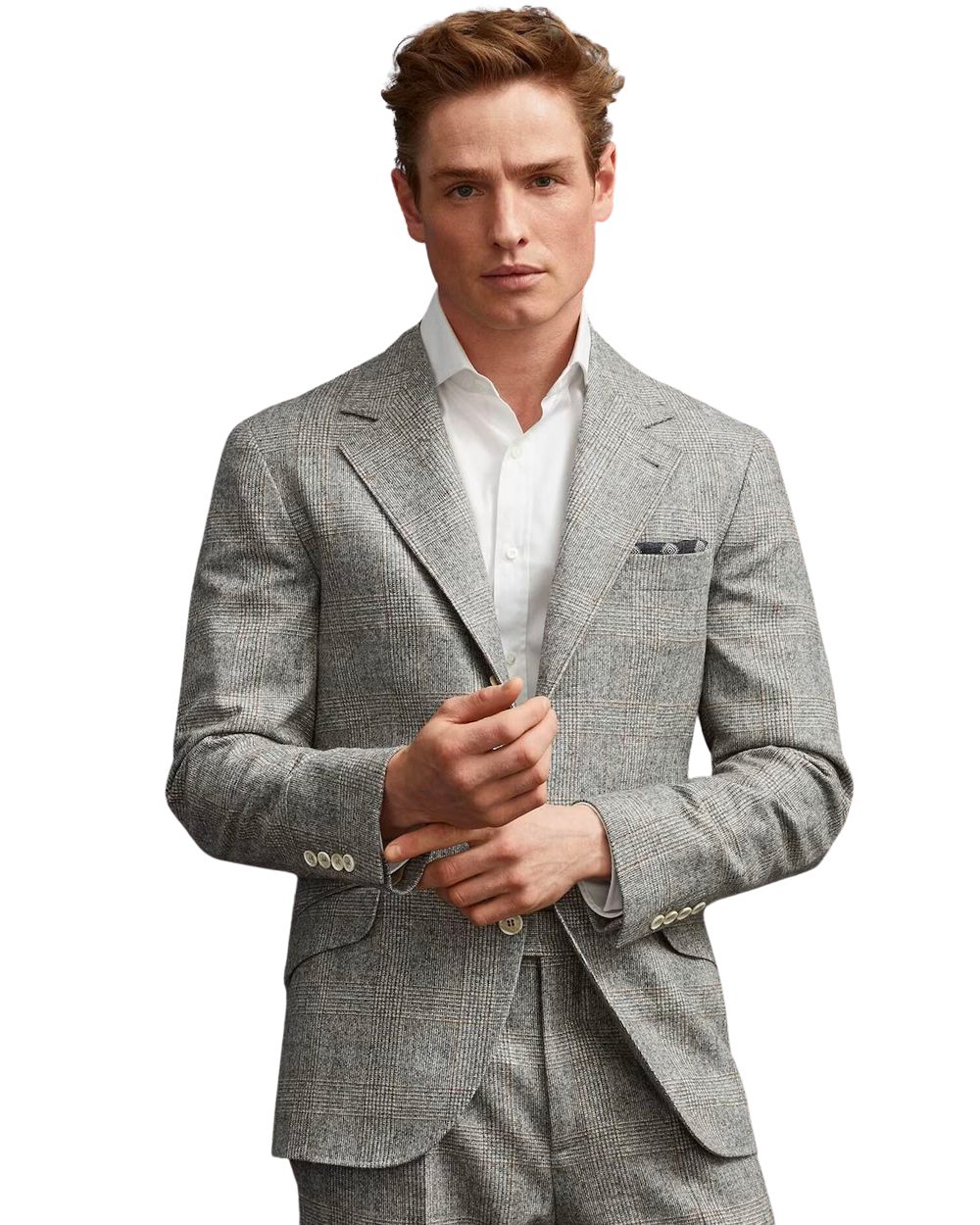
It takes a confident guy to pull off a printed or patterned suit, and it should be warned that there is a fine line between cool and comedy. Check patterns and pinstripes are obviously the easier to pull off since they have been an integral part of menswear for centuries.
Unless you’re Scottish nobility and have your own family tartan, we’d suggest sticking to muted tonal checks with a quiet accents of colour running them. Similarly with pinstripes, keep them narrow and subtle for a powerful business look.
‘Printed’ jacquard suits are a whole other ball game, given they are very fashion forward. Alexander McQueen is your go-to luxury brand for this kind of thing, and while you probably wouldn’t rock up to work in it, it makes for a very bold statement at special events.
The Seersucker Suit
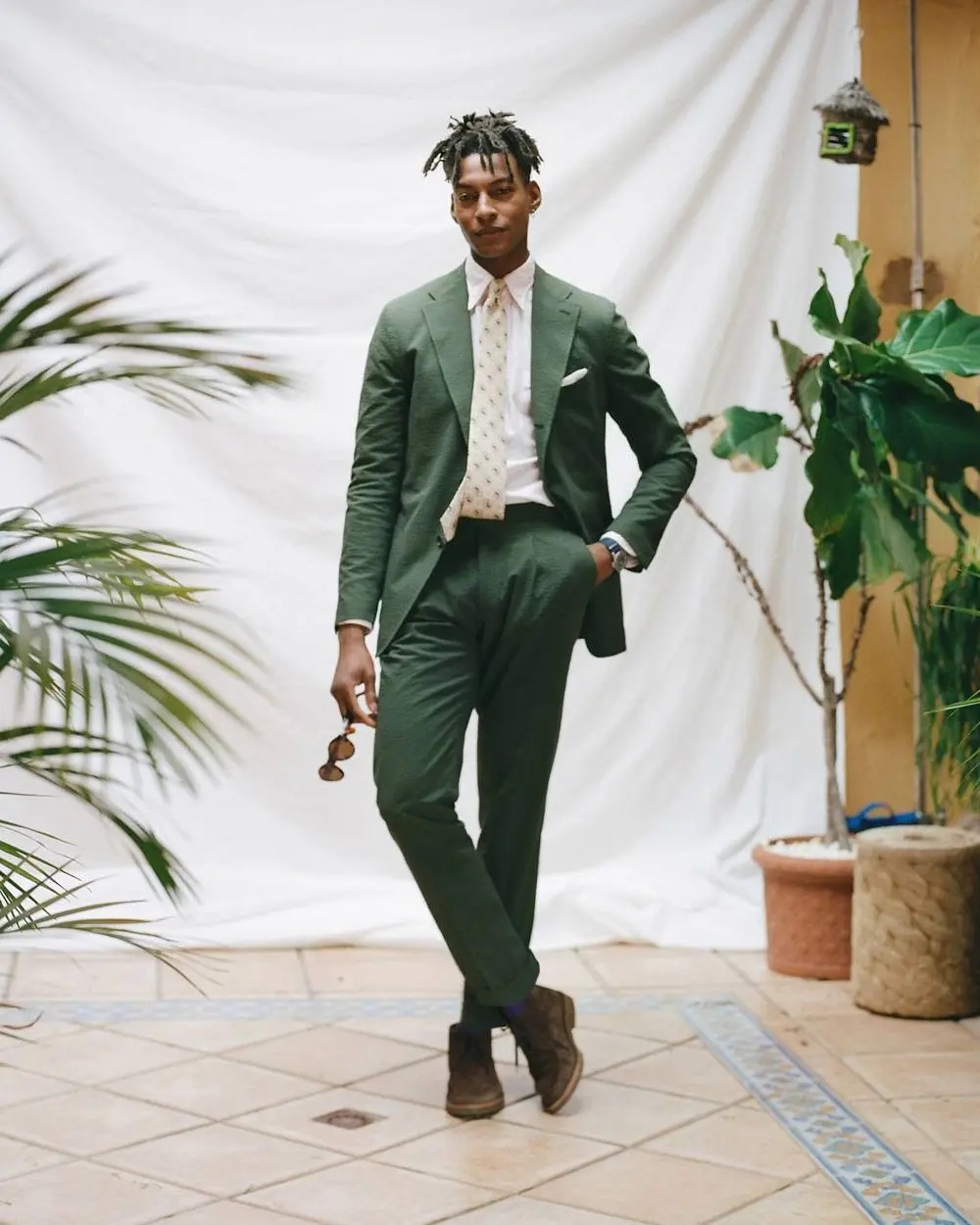
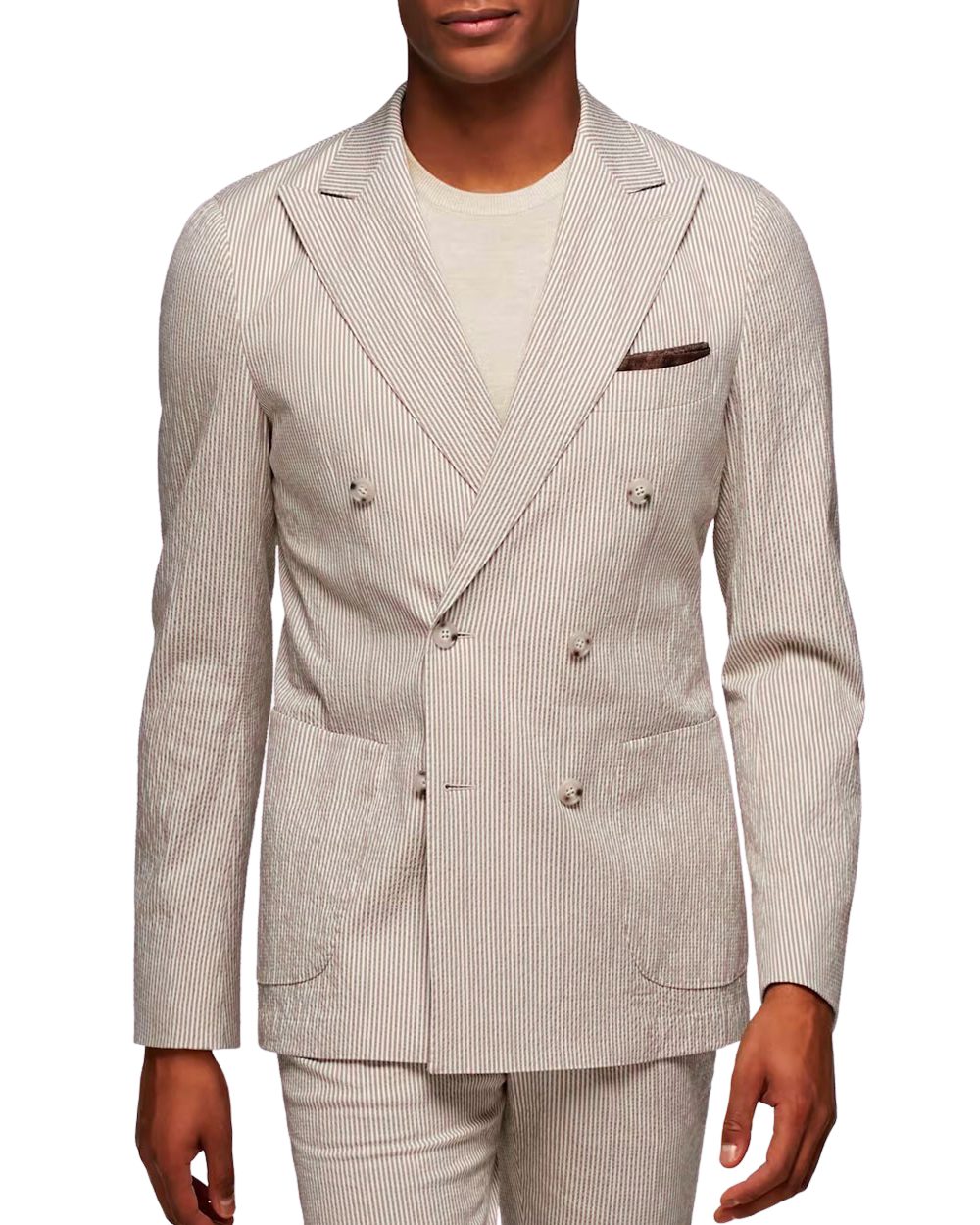
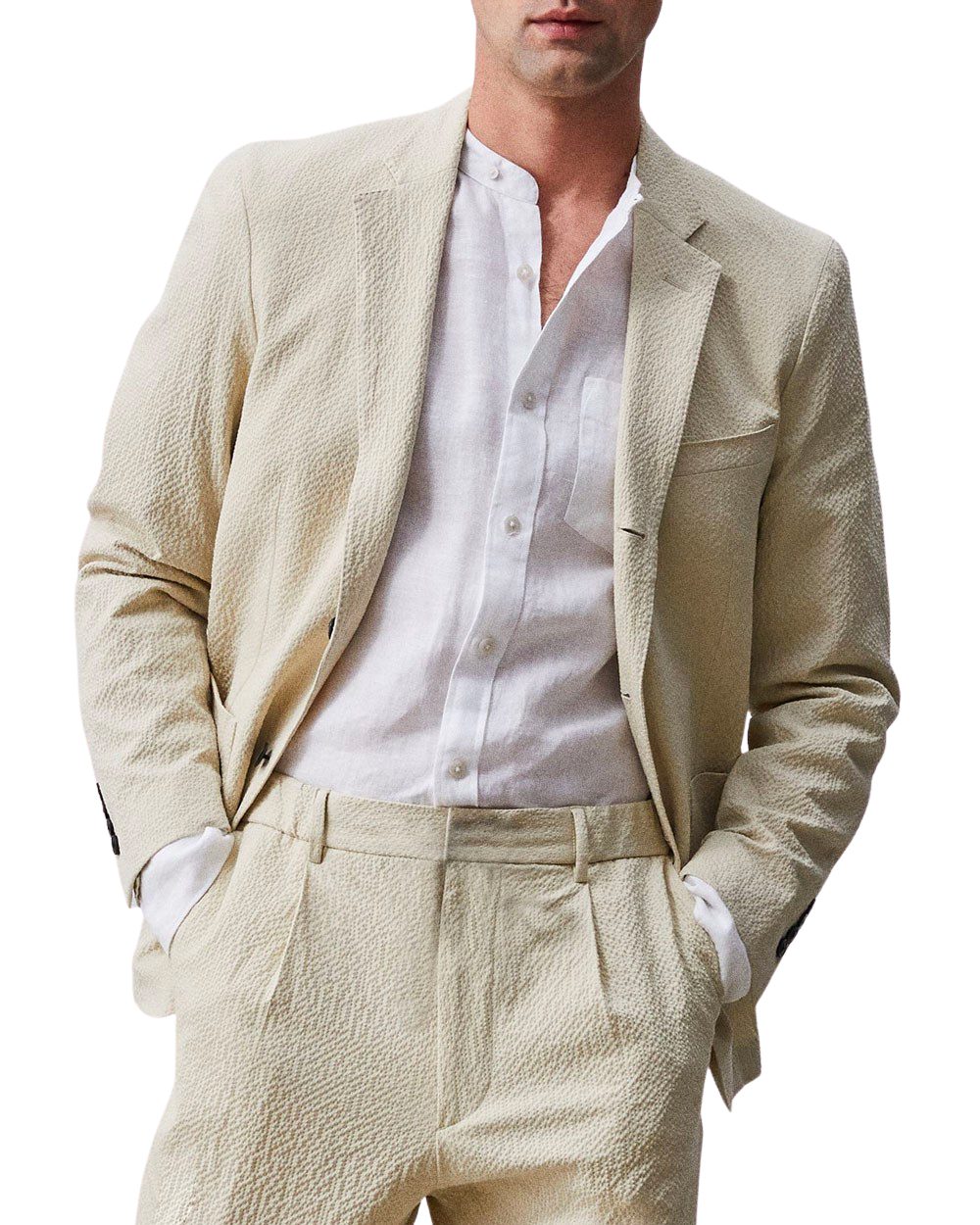
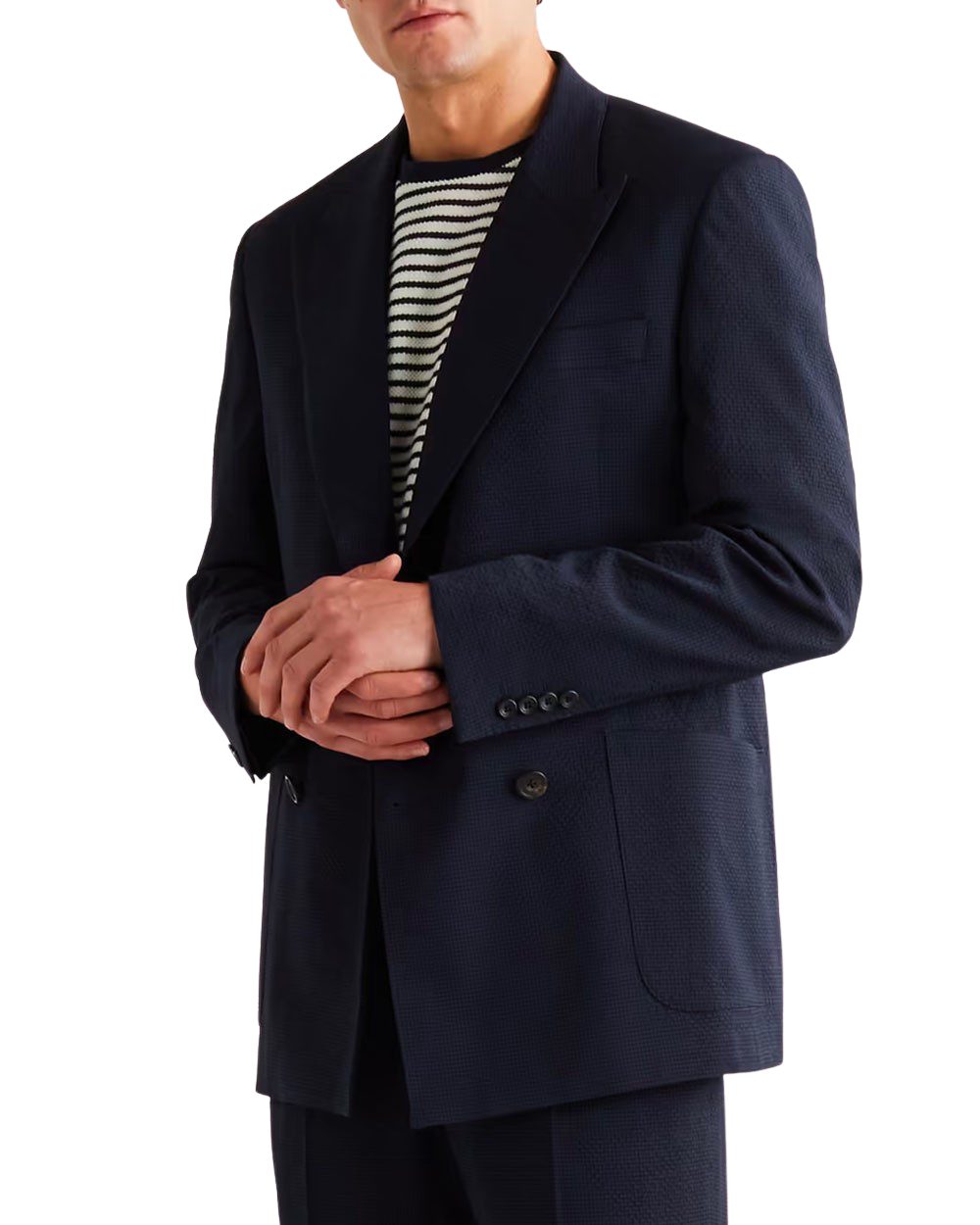
The film adaptation of Harper Lee’s To Kill a Mockingbird really put the dimpled seersucker suit on the map after Gregory Peck wore a stunning three-piece version cut in the fabric.
Seersucker was reputedly born in New Orleans in 1909 at the hands of a haberdasher named Joseph Haspel before the Ivy League pack of the 1920s began to adopt it wholesale, thanks to the quick and prescient work of Brooks Brothers. The Duke of Windsor wore a two-piece seersucker while on holiday in the Italian Riviera some time in the 1940s.
Despite its crumpled appearance, the suit became the choice of the rich and flamboyant, and in 1958 the jazz impresario Miles Davis wore seersucker on the cover of his live album At Newport.
Today, it remains a brilliant summer suit fabric and works extremely well in unstructured jacket form, being lightweight and breathable with a unique dry handle to the touch.
The Corduroy Suit
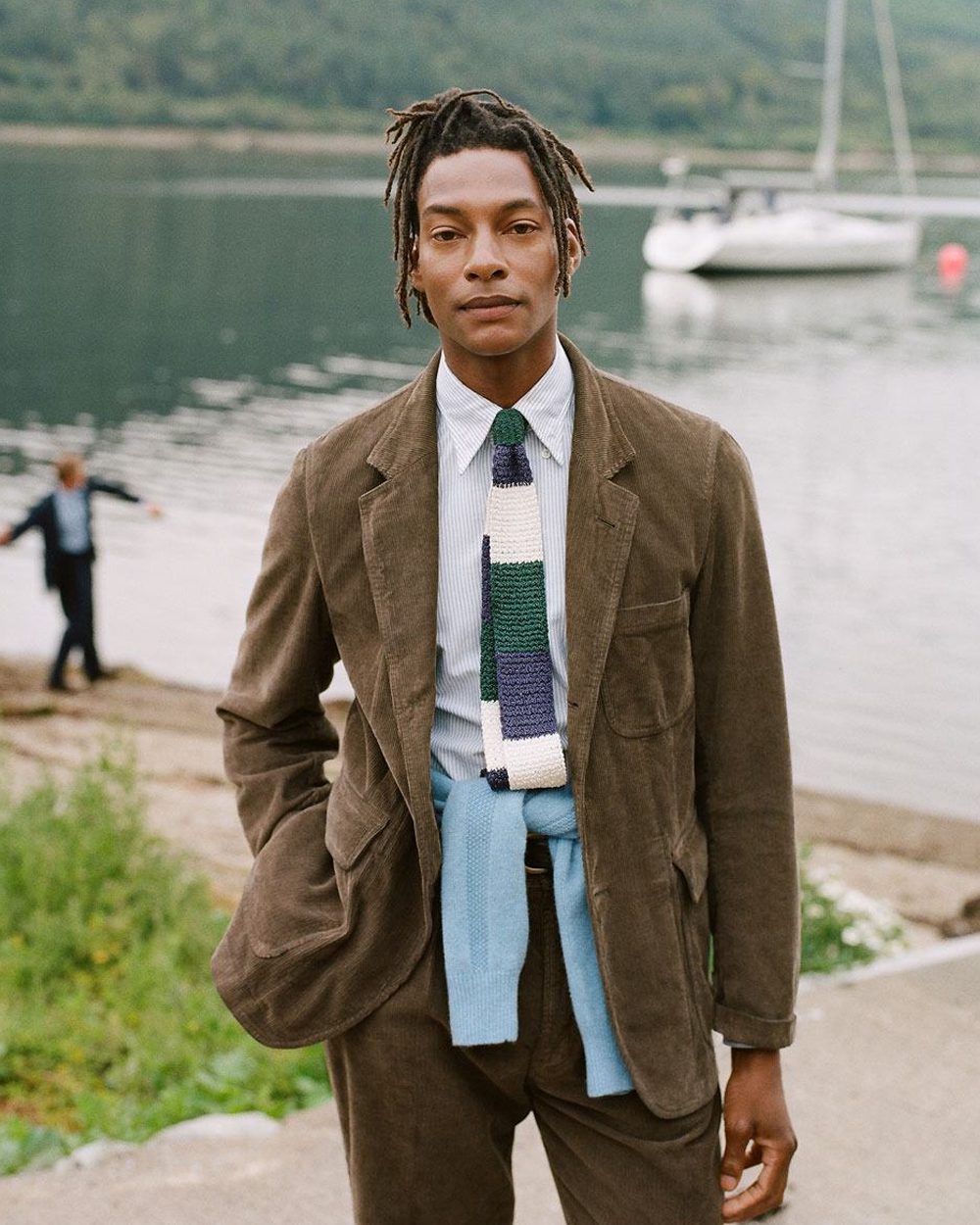
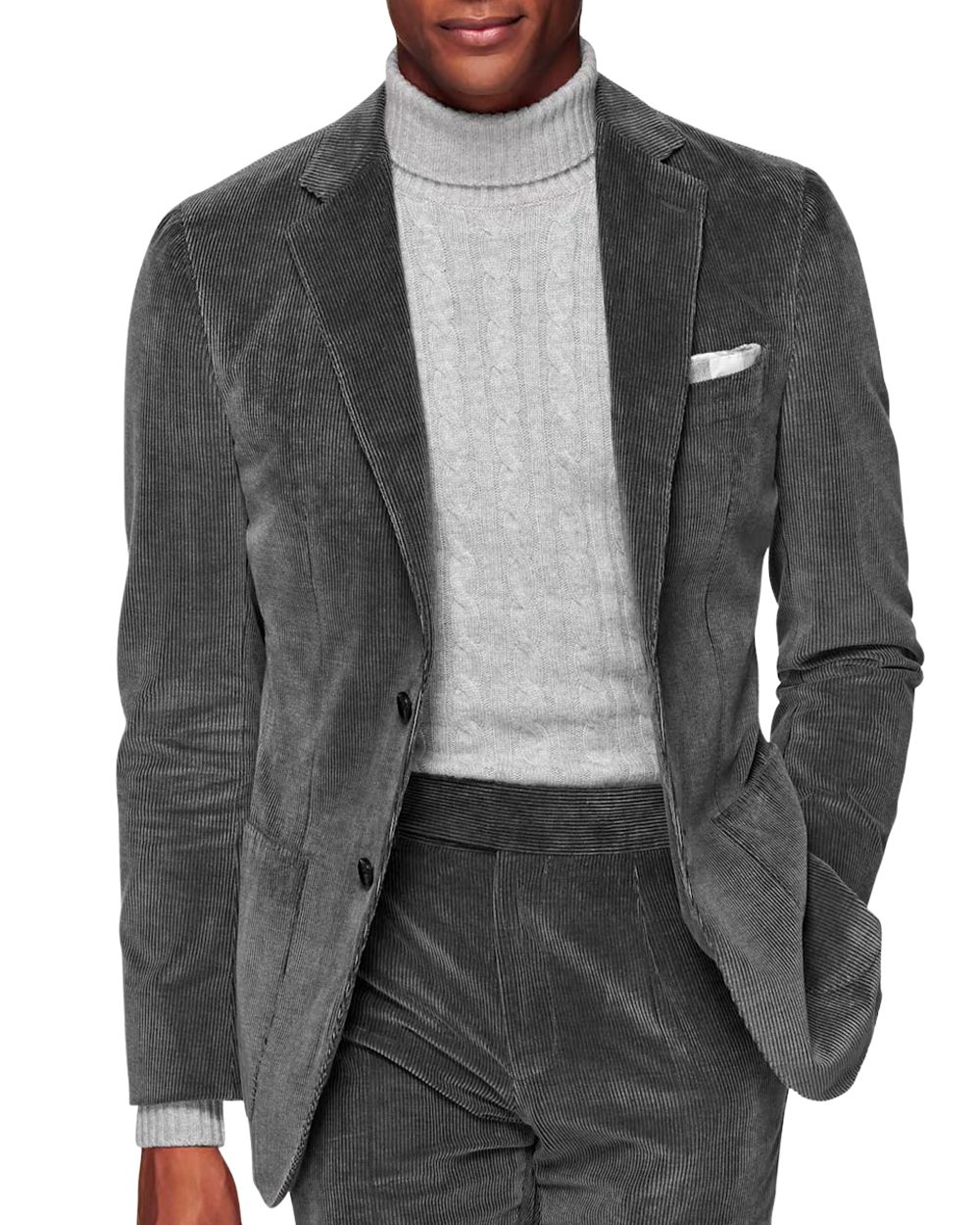
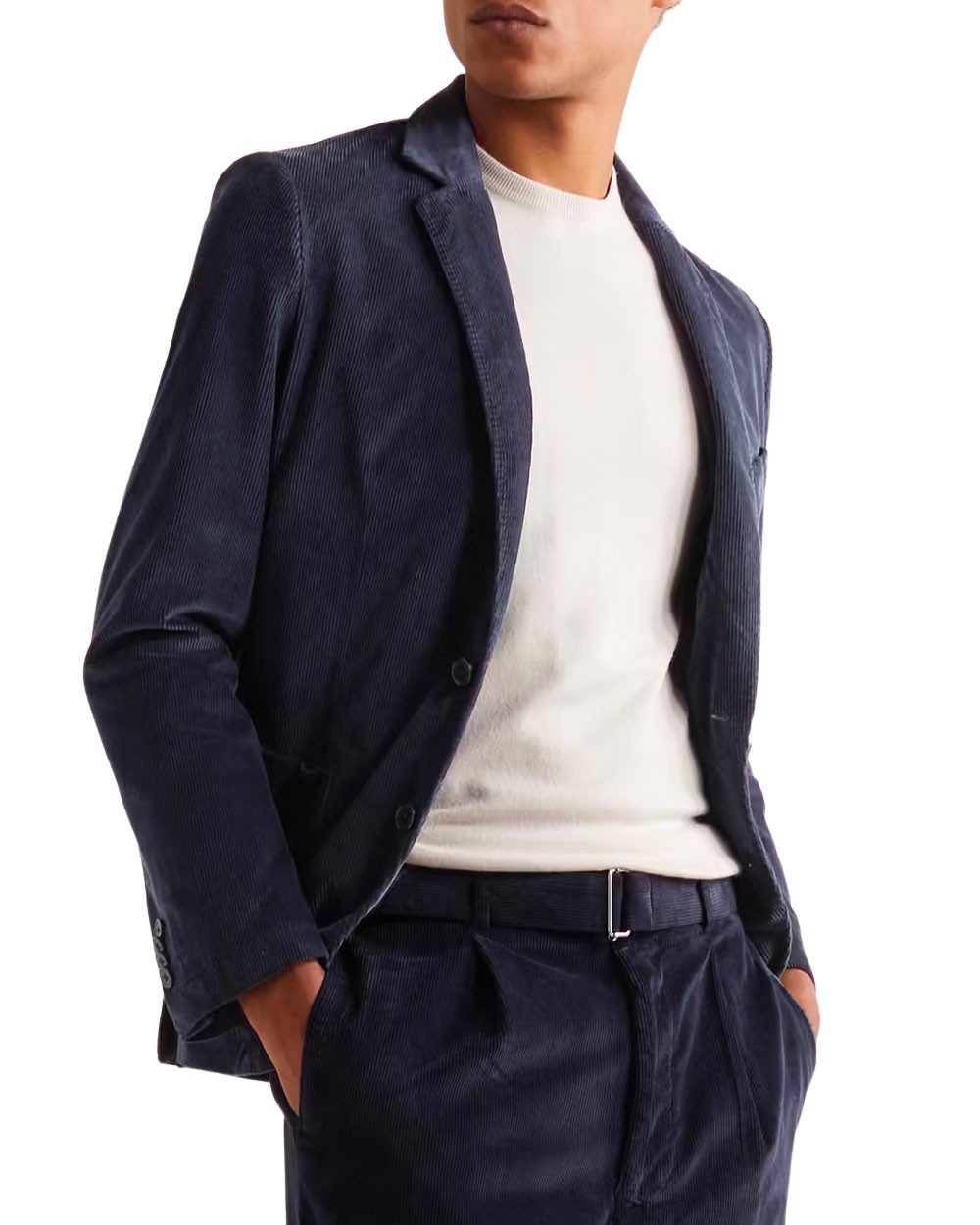
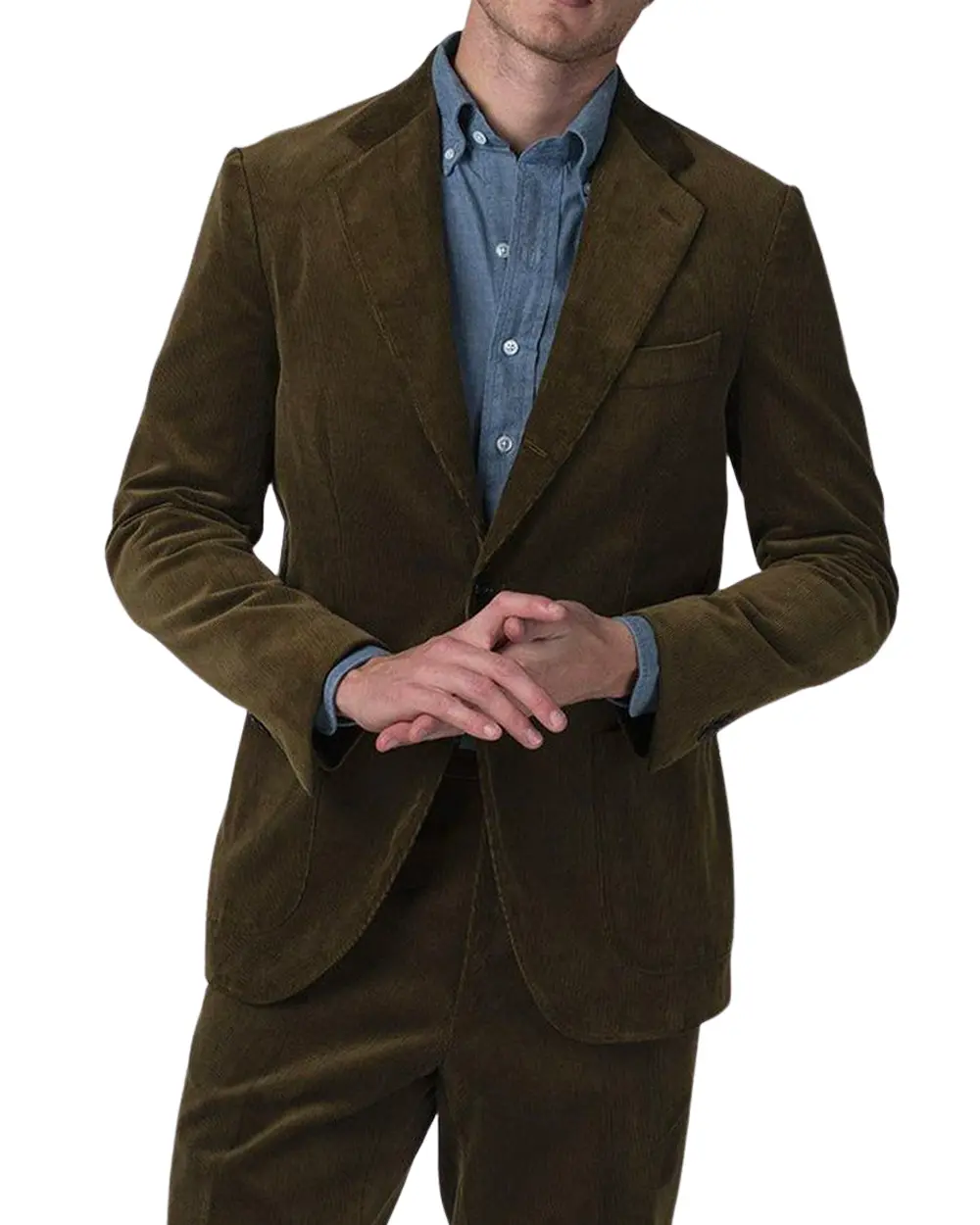
One of the more iconic suits in film in recent memory is the tan corduroy number worn by Daniel Craig in the explosive opening vignette in No Time to Die. Made by Massimo Alba, the suit (and the scene) is what a great corduroy suit is all about – rugged, versatile, textural and tactile. Although Bond formalises it with a shirt and tie, the choice of chukka boots to bookend the look are perfect because the corduroy suit is inherently casual. You still get that clean tailored silhouette but it’s a suit that’s almost more comfortable with a plain tee or polo.
The thickness of the wales is an important consideration here – the wider you go the more textural and avant garde it gets, whereas at the other end of the spectrum, something like a micro wale corduroy will have a comparatively smooth texture and will appear much smarter.
The Workwear Suit
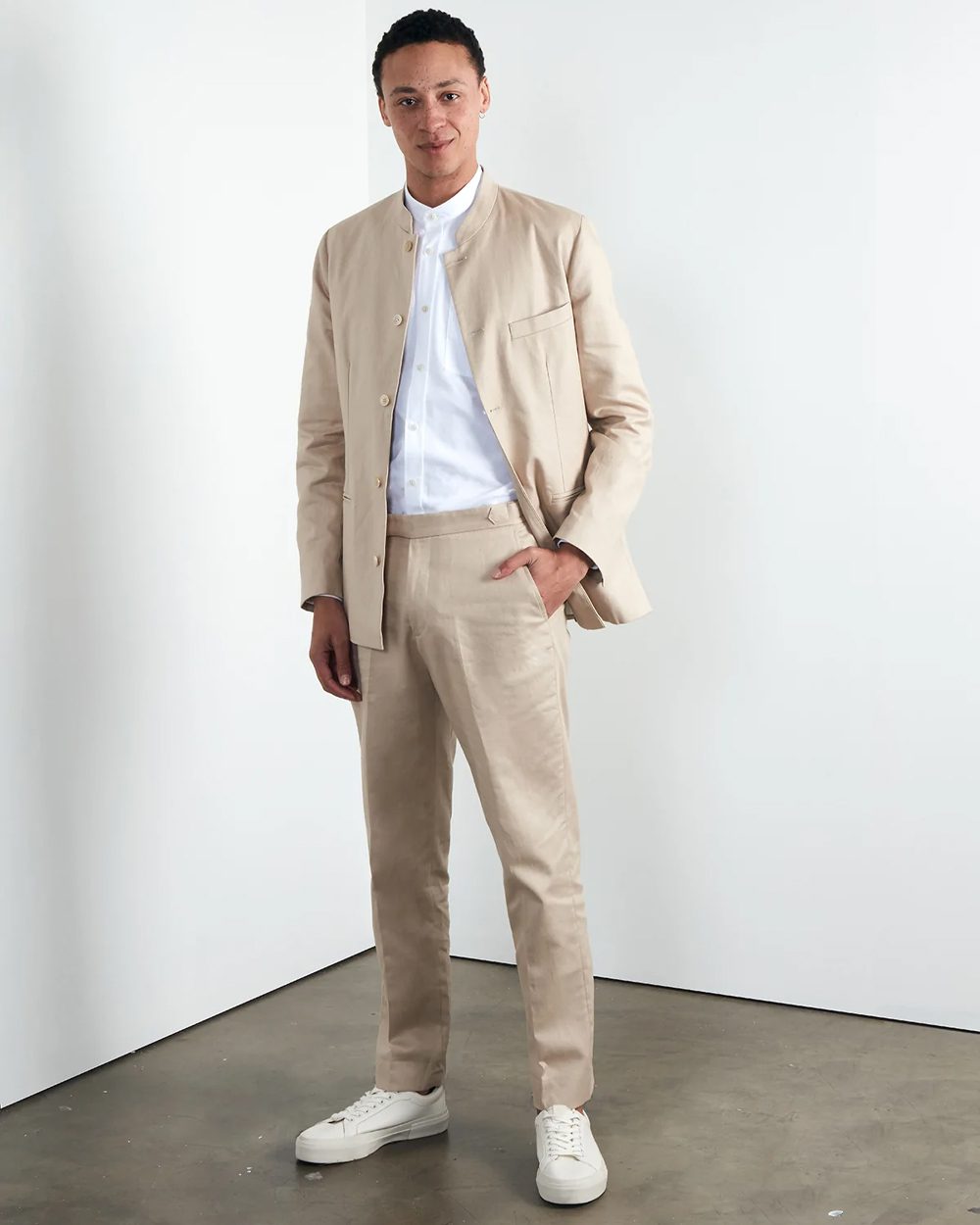
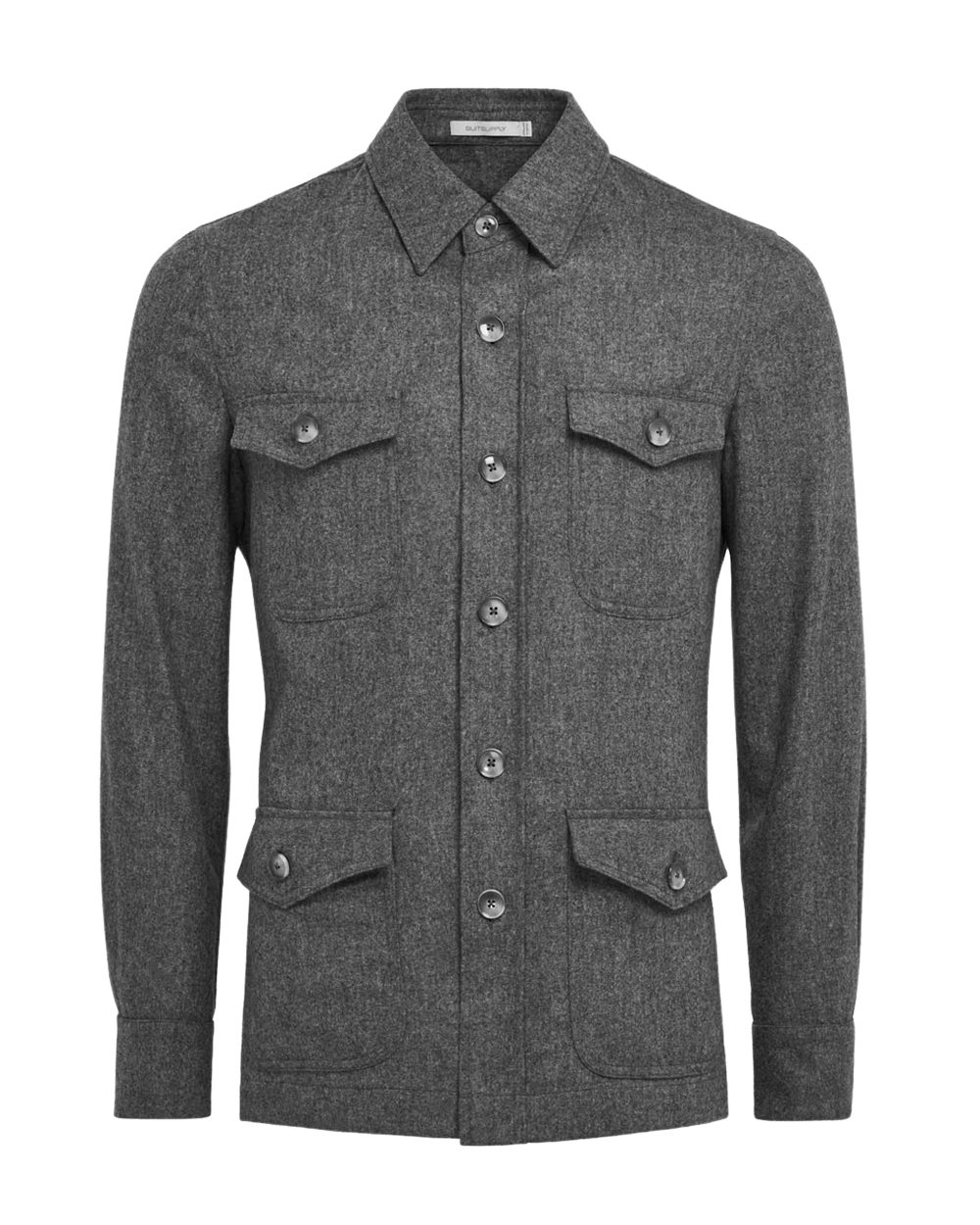
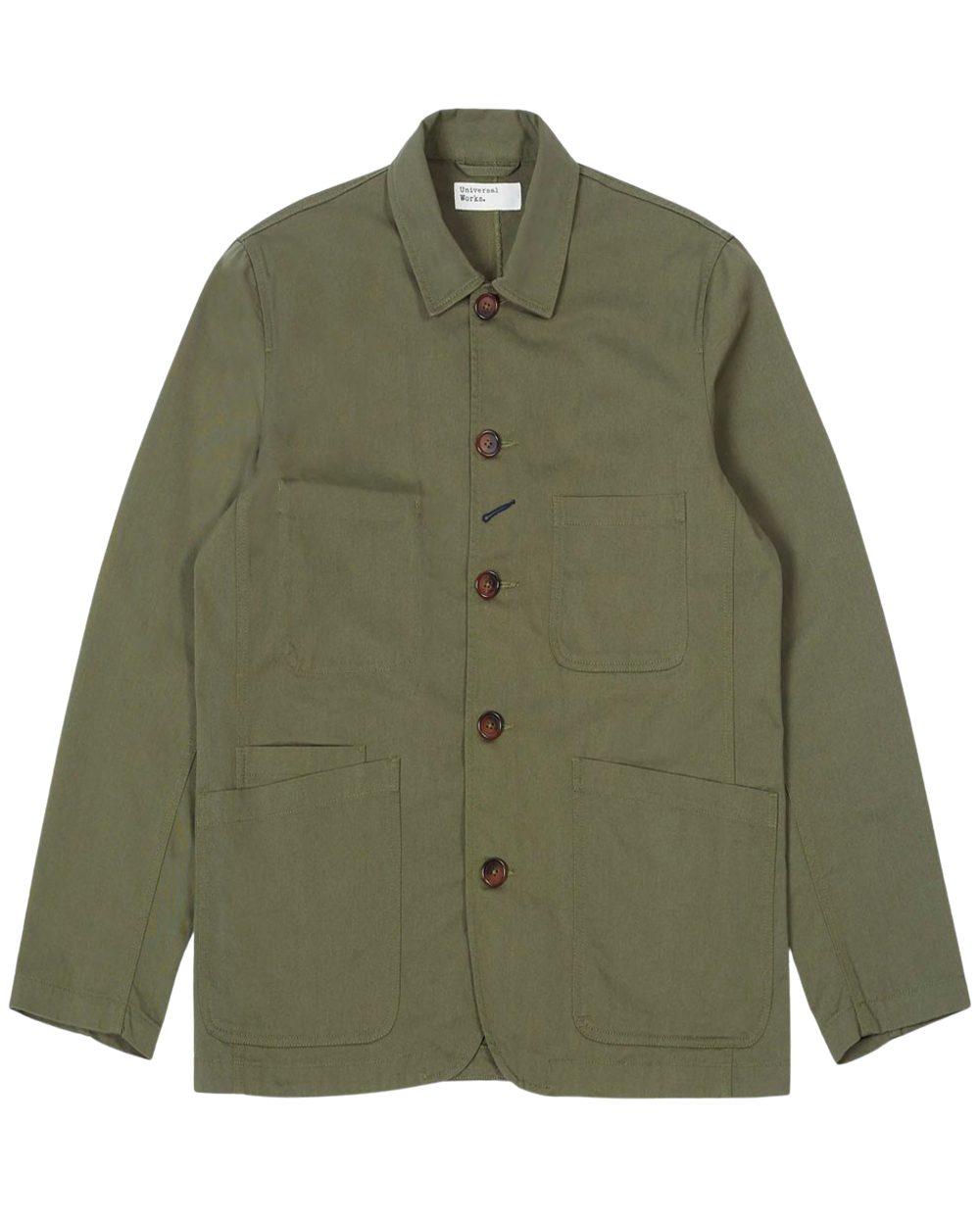
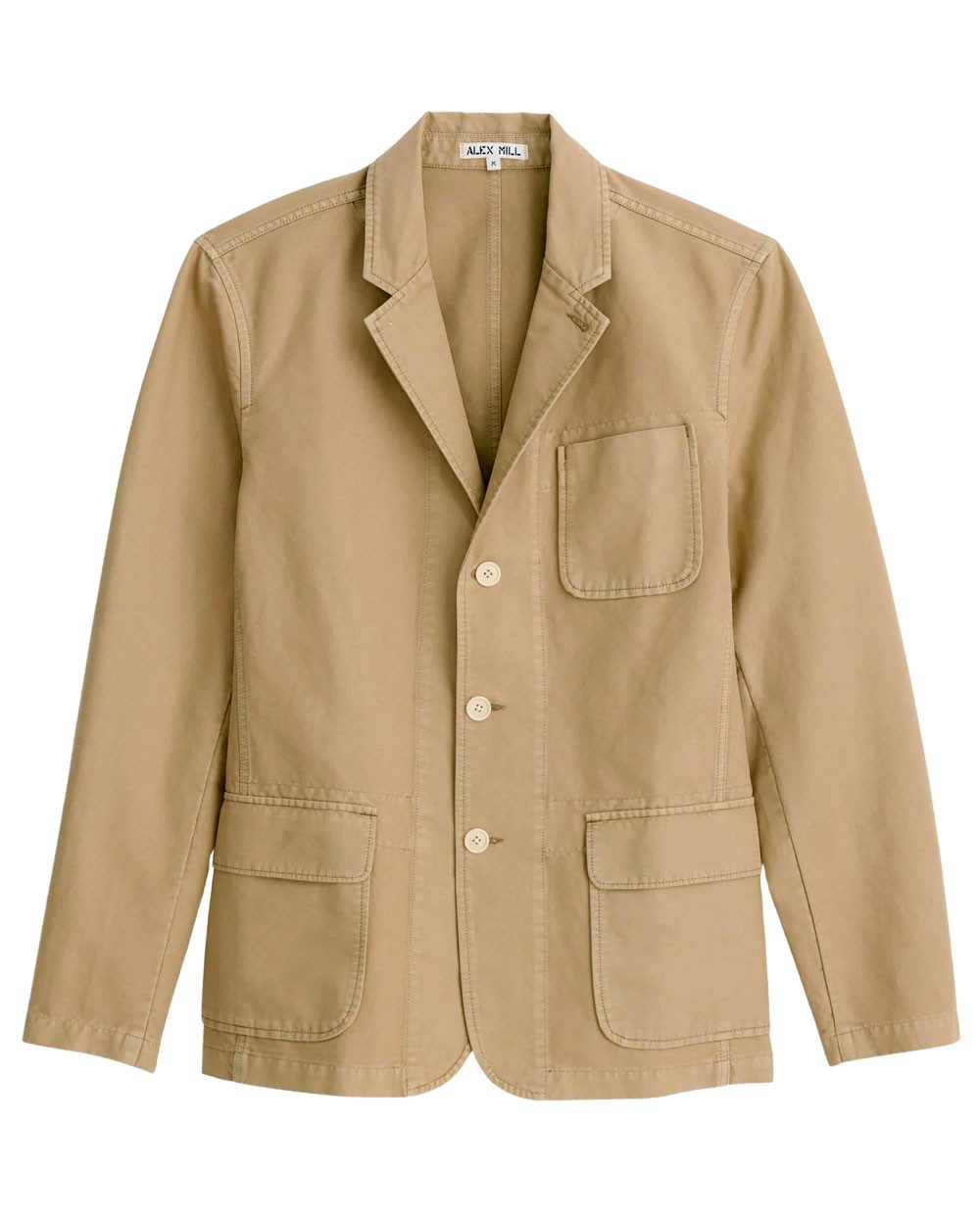
The workwear suit references the two-piece uniforms worn by blue collar workers in the 19th century. A much more casual iteration of the suit, the jacket is typically similar to a bleu de chine or three-pocket chore jacket, often doing away with the lapels entirely in favour of a Nehru-style collar or a turn-down shirt collar.
Brands that do this look really well are the likes of Universal Works and Oliver Spencer, pairing said jackets with contemporary cuts of trousers such as cropped judo pants and cargo pants. Given it’s a very casual look, you can think of it more of a set than a suit, to be worn with relaxed tees, polos or sweats.
The post 8 Men’s Casual Suits That You Can Wear Anywhere In 2022 appeared first on Ape to Gentleman.
from Ape to Gentleman https://ift.tt/9xTuryU
via IFTTT